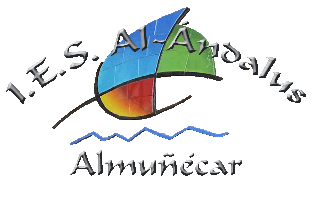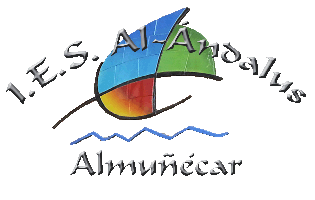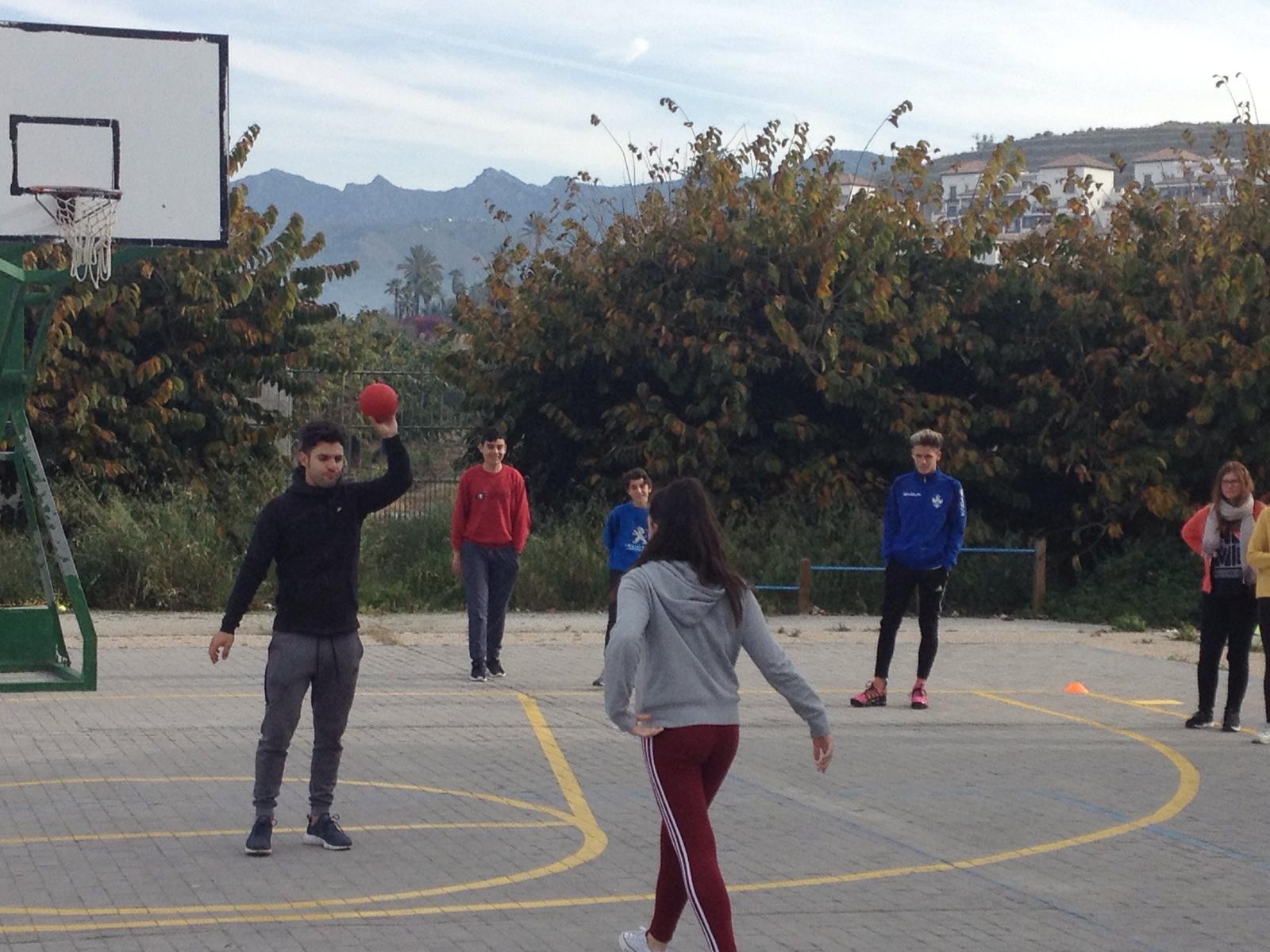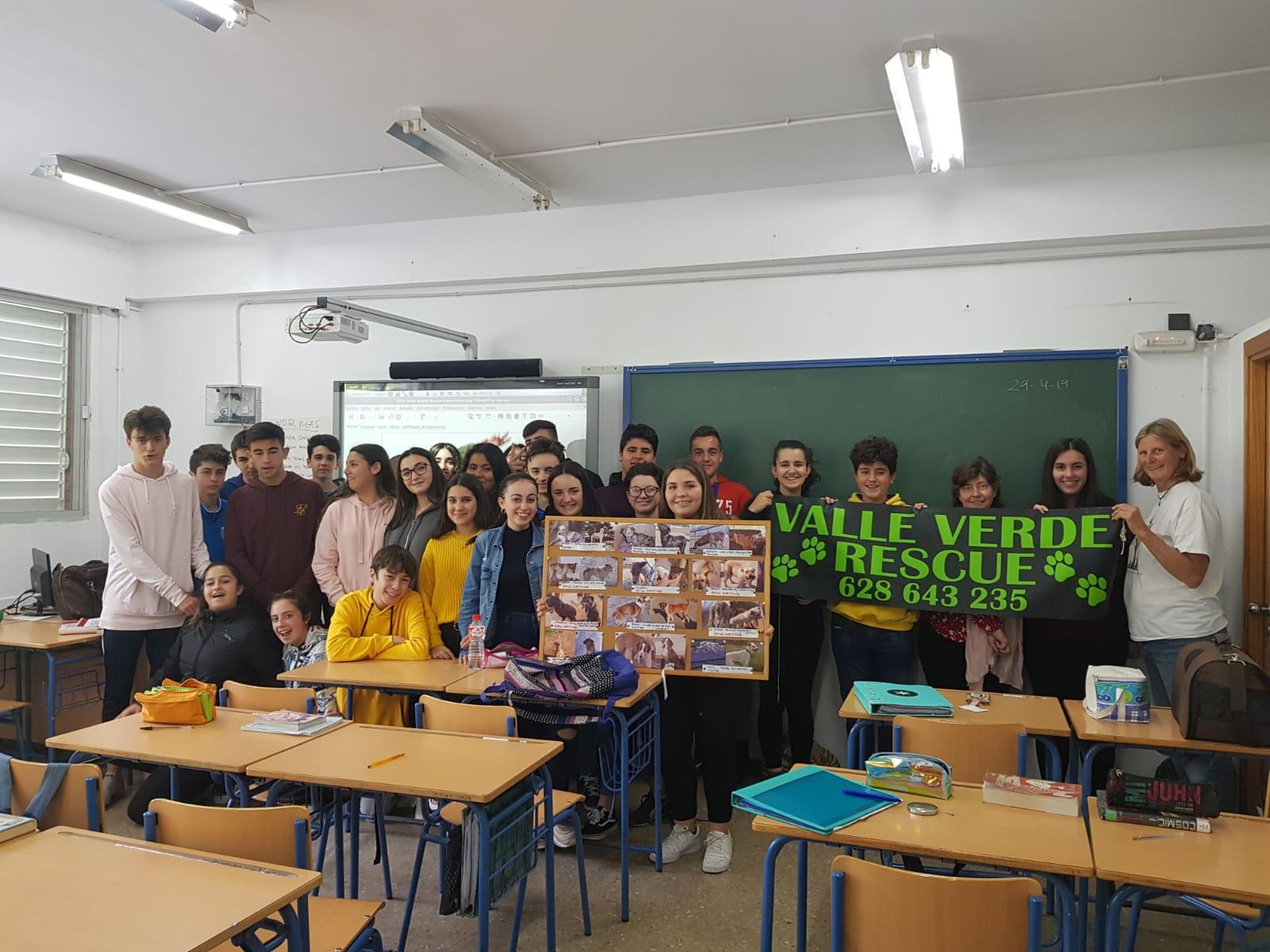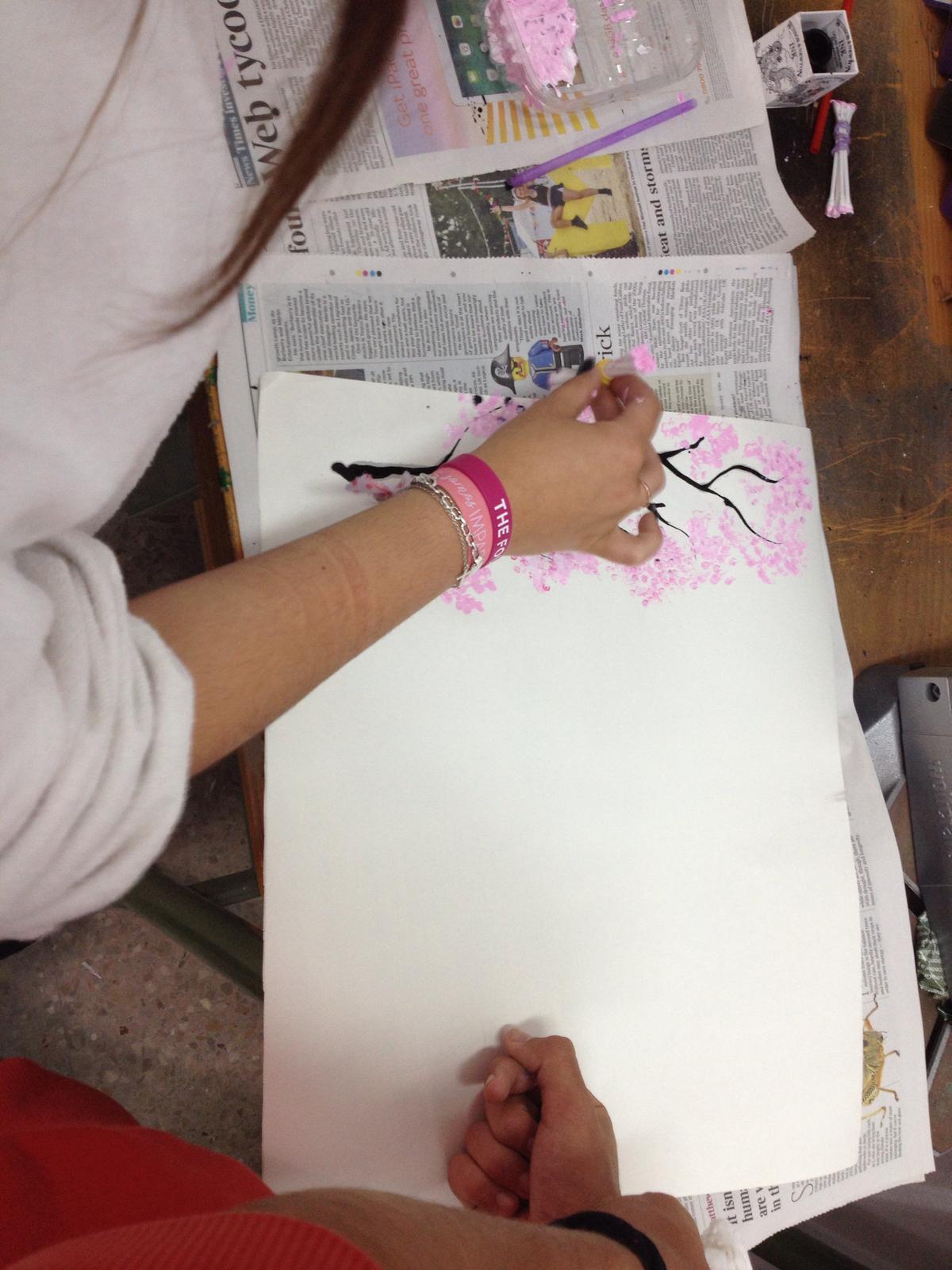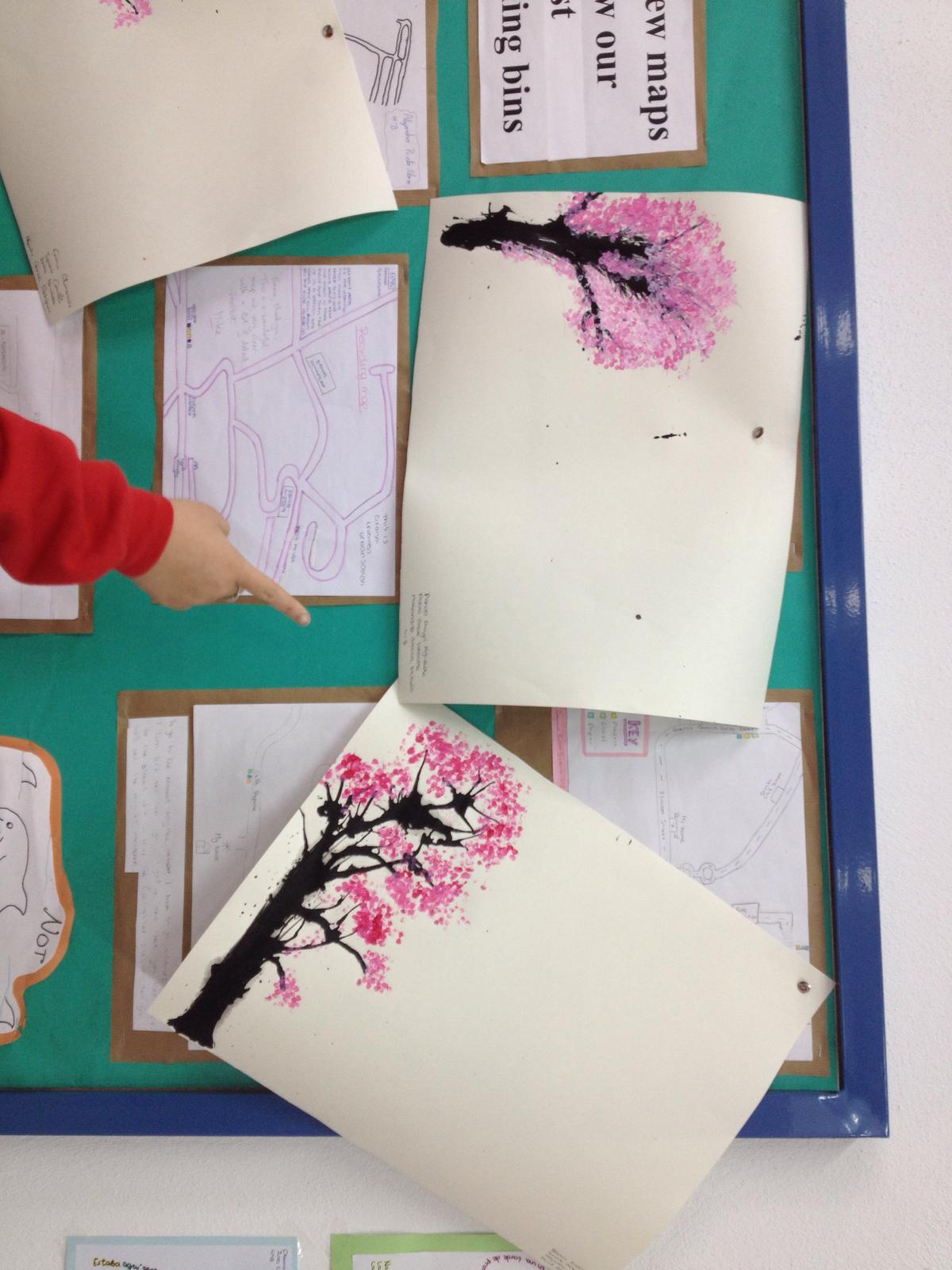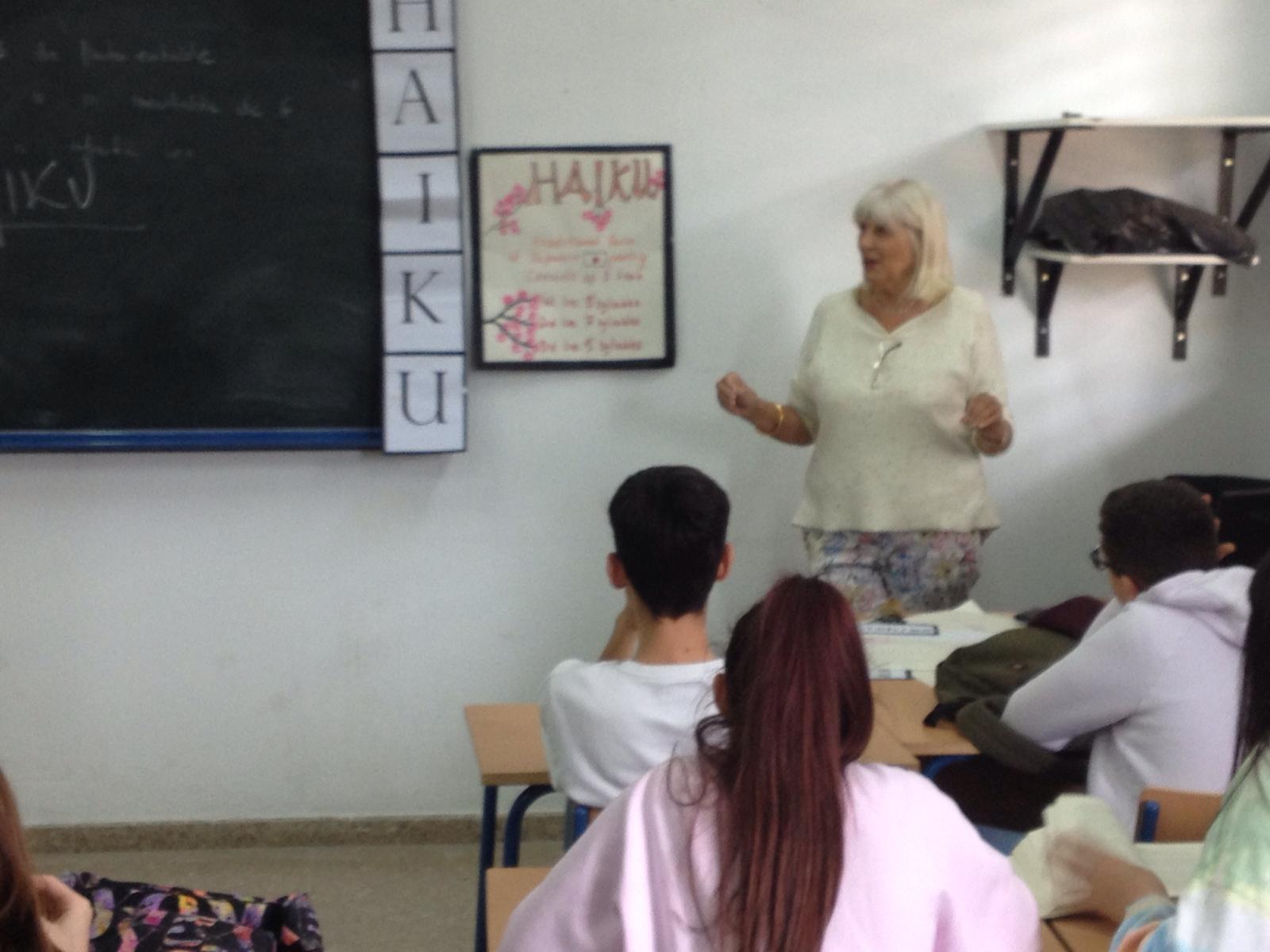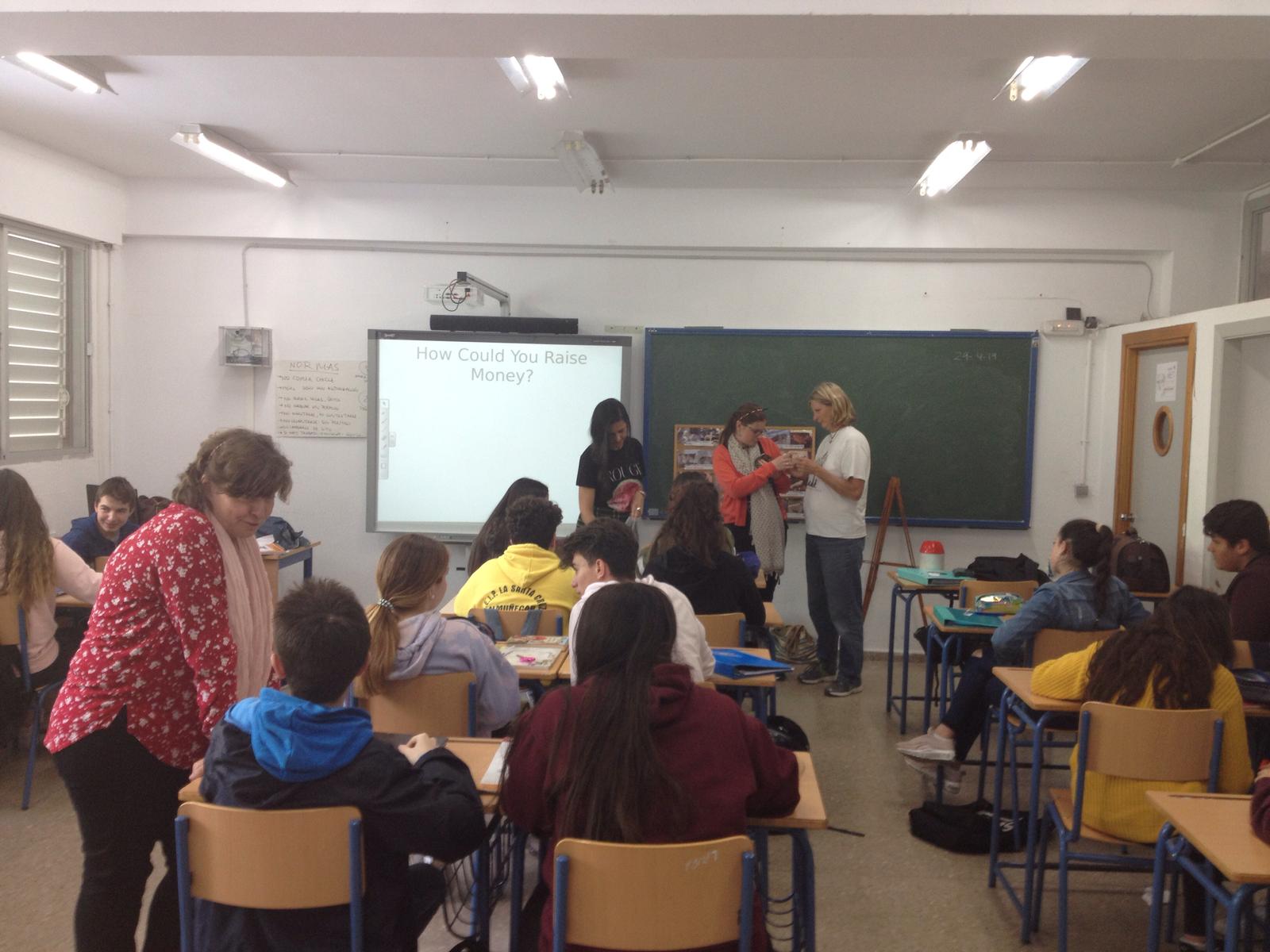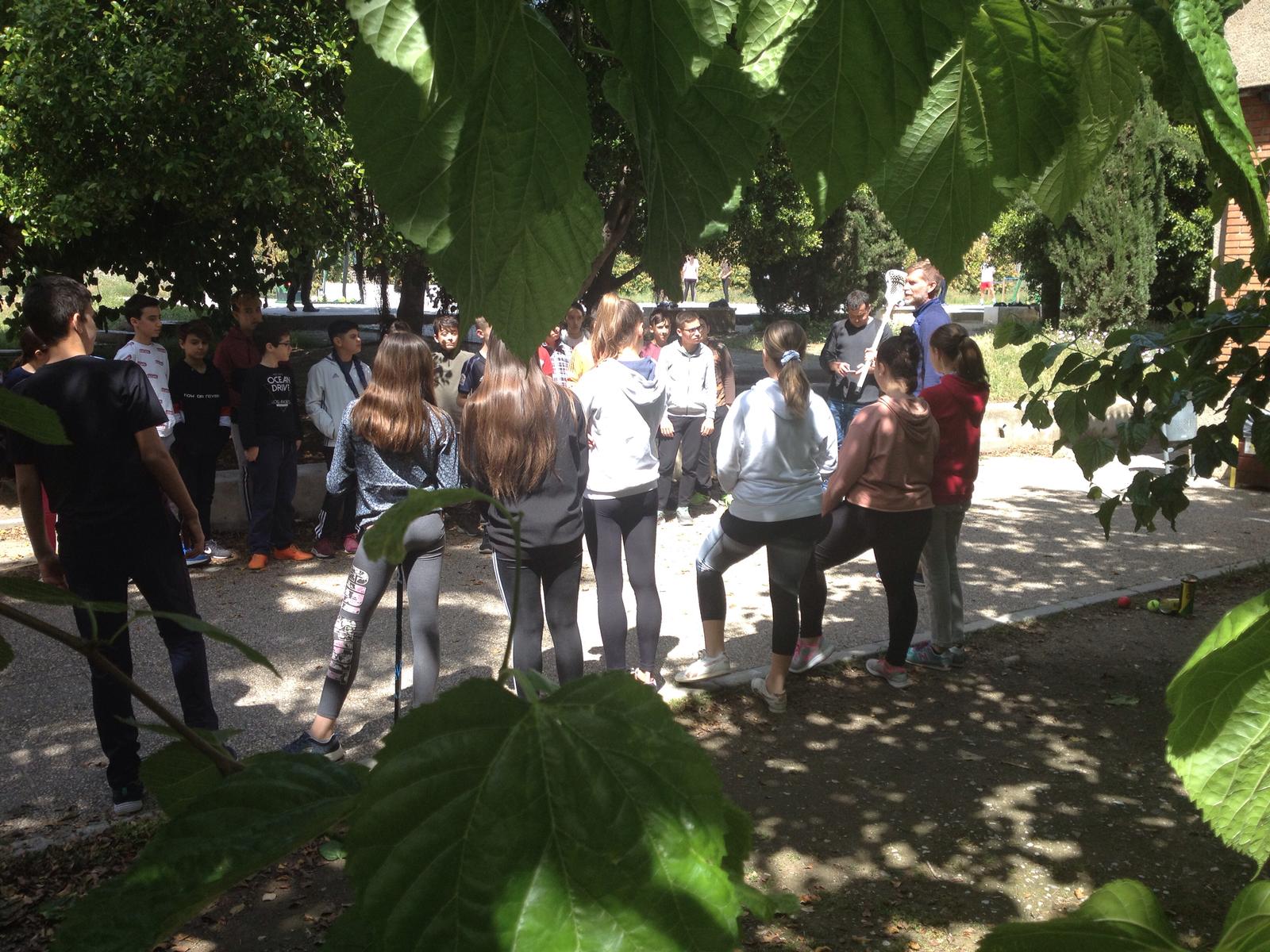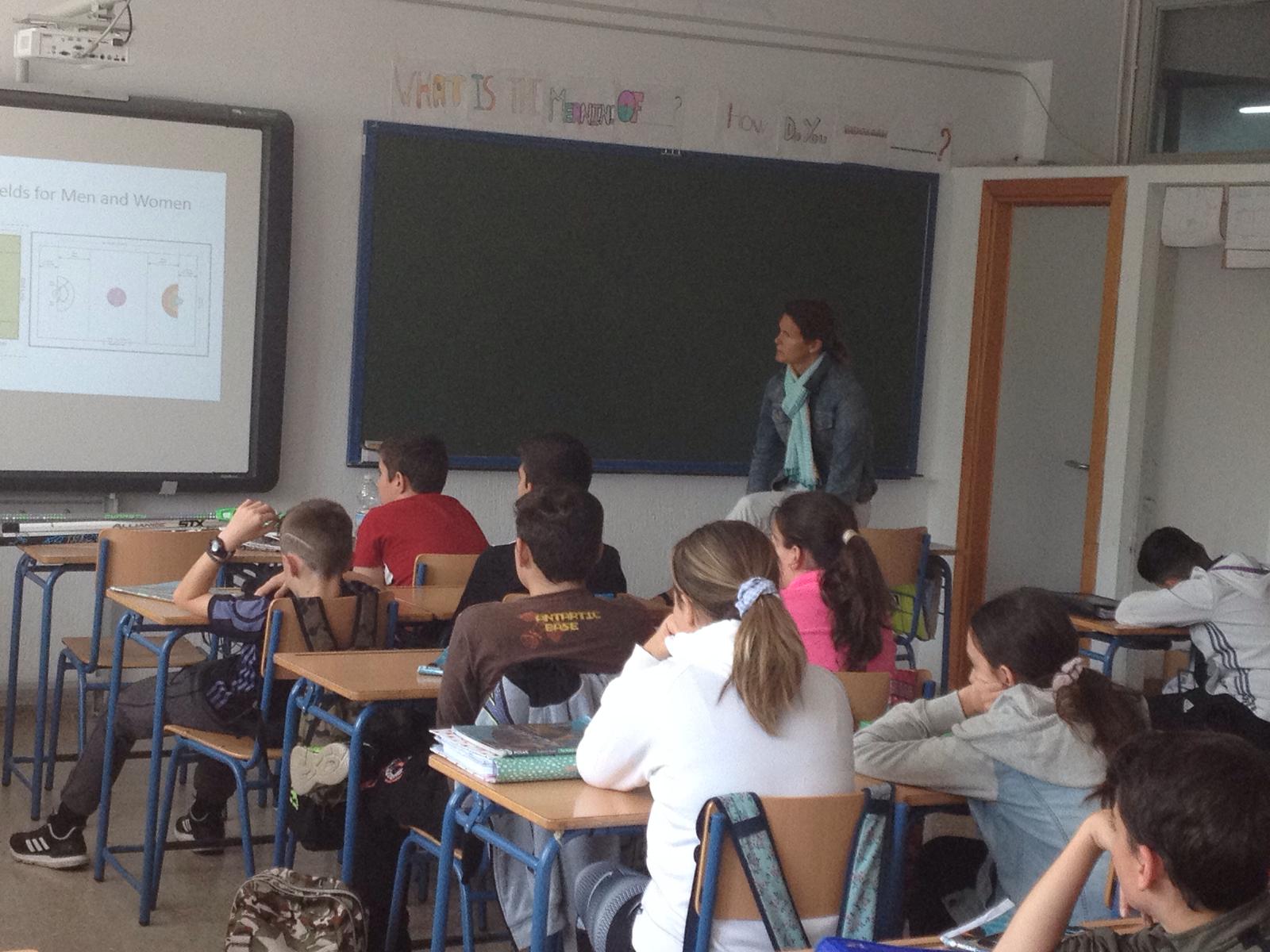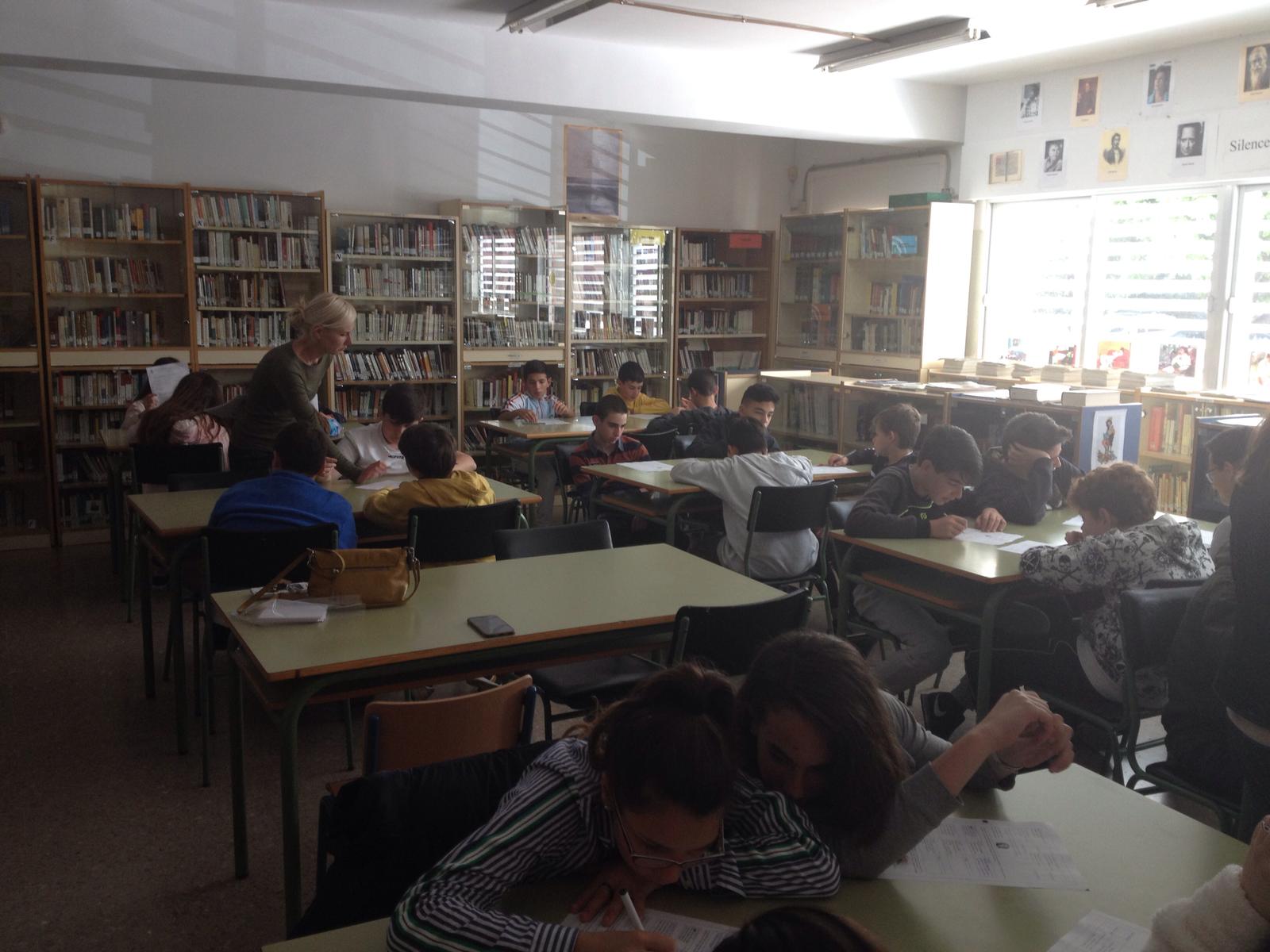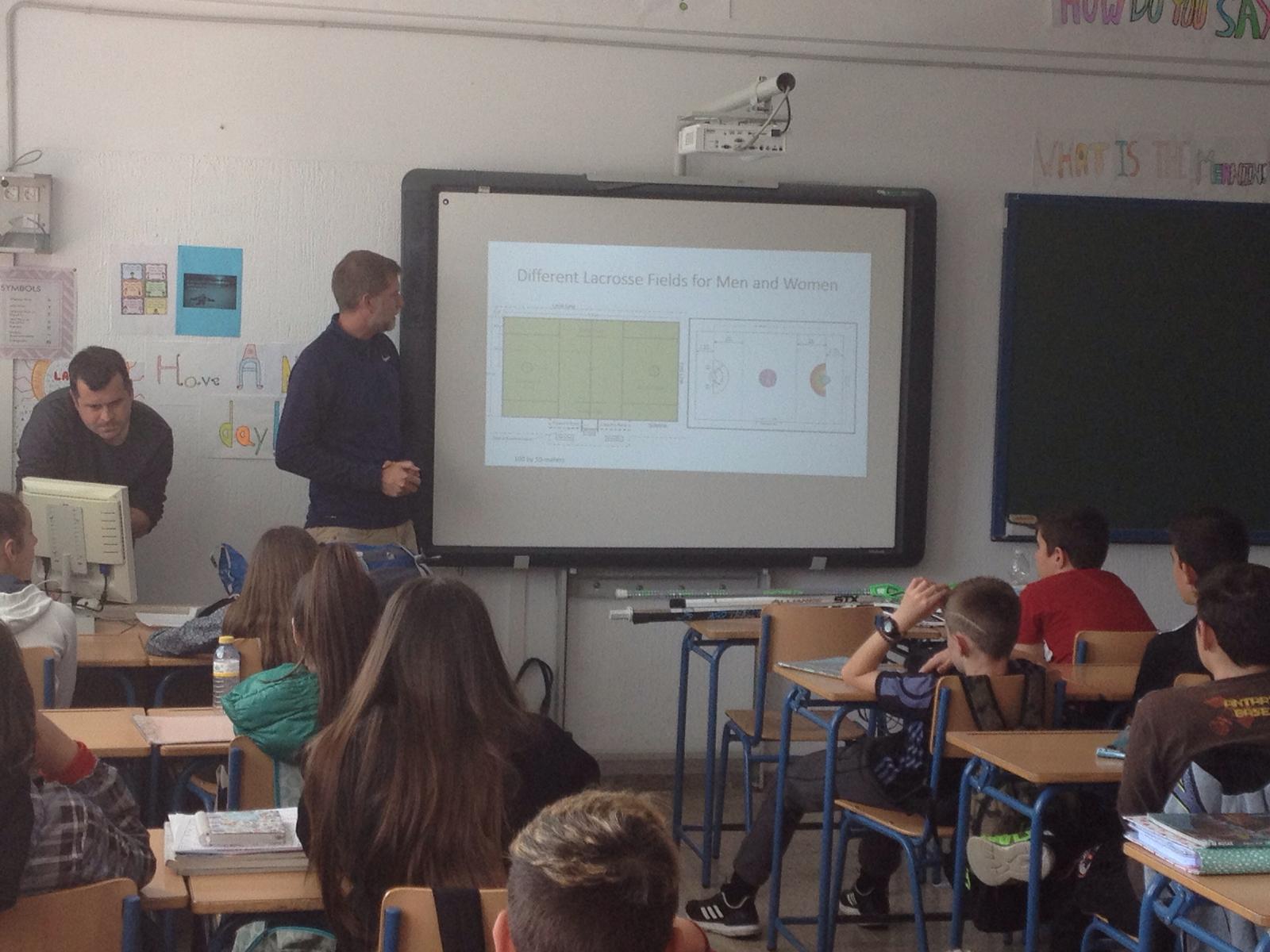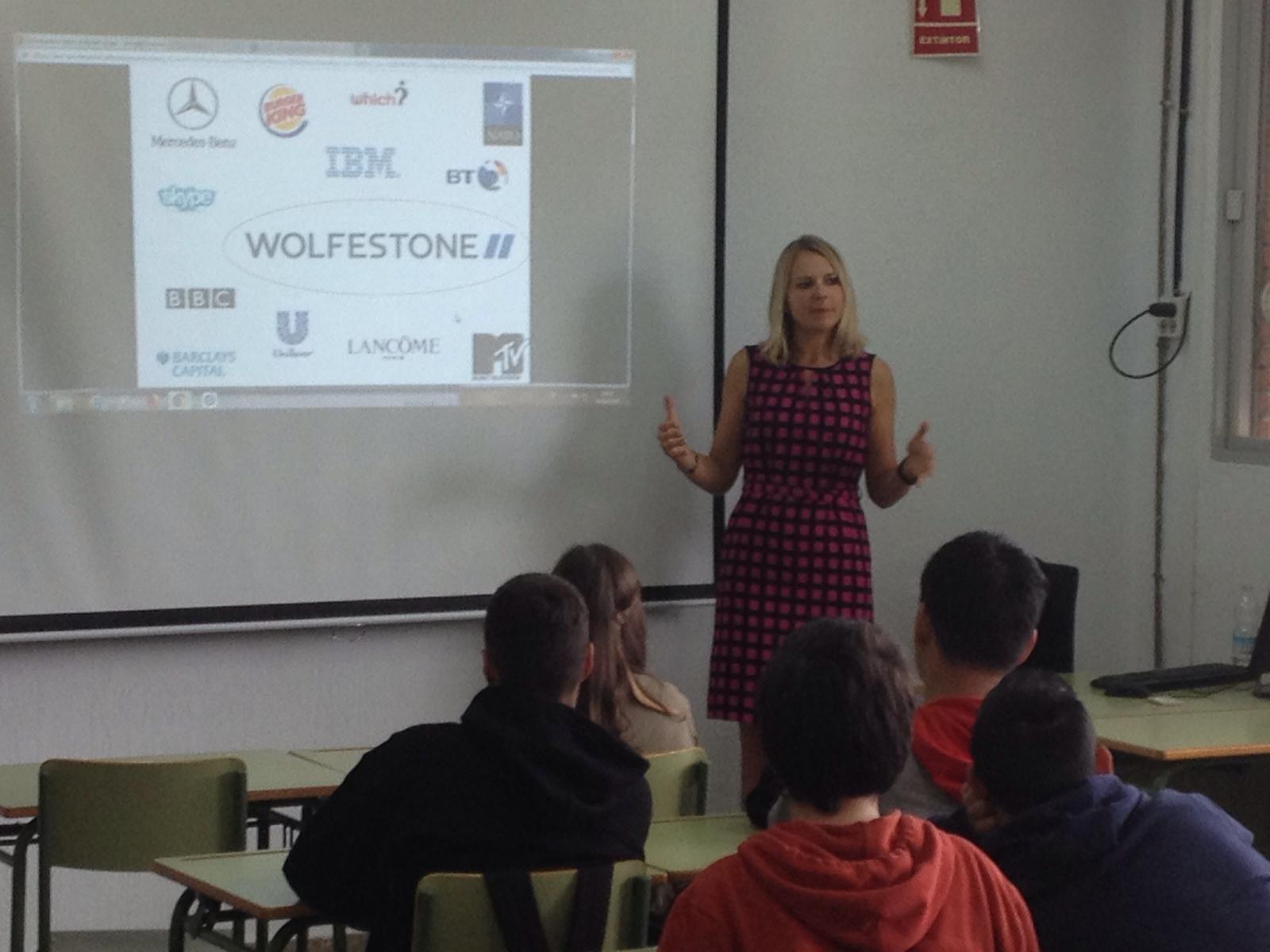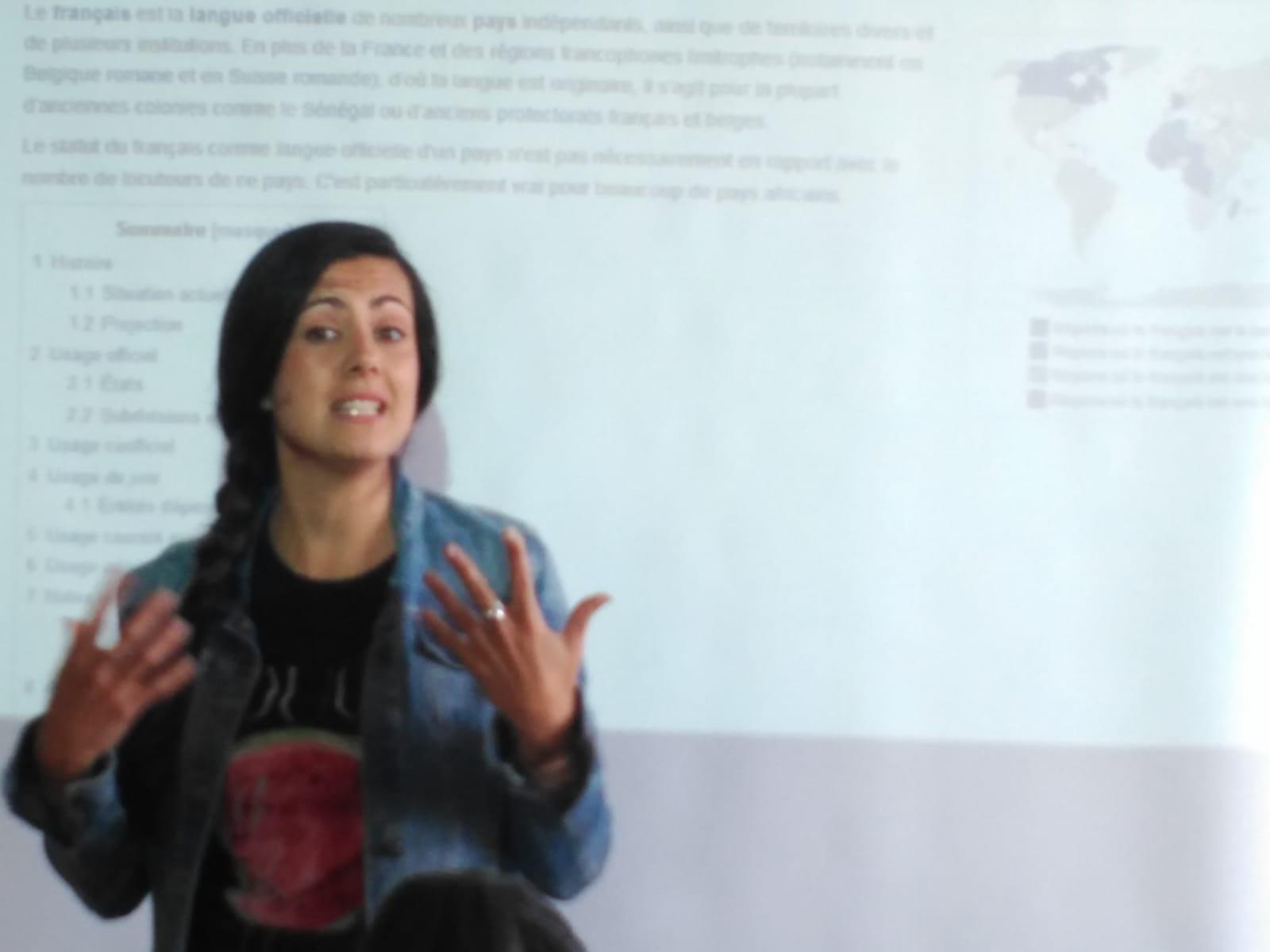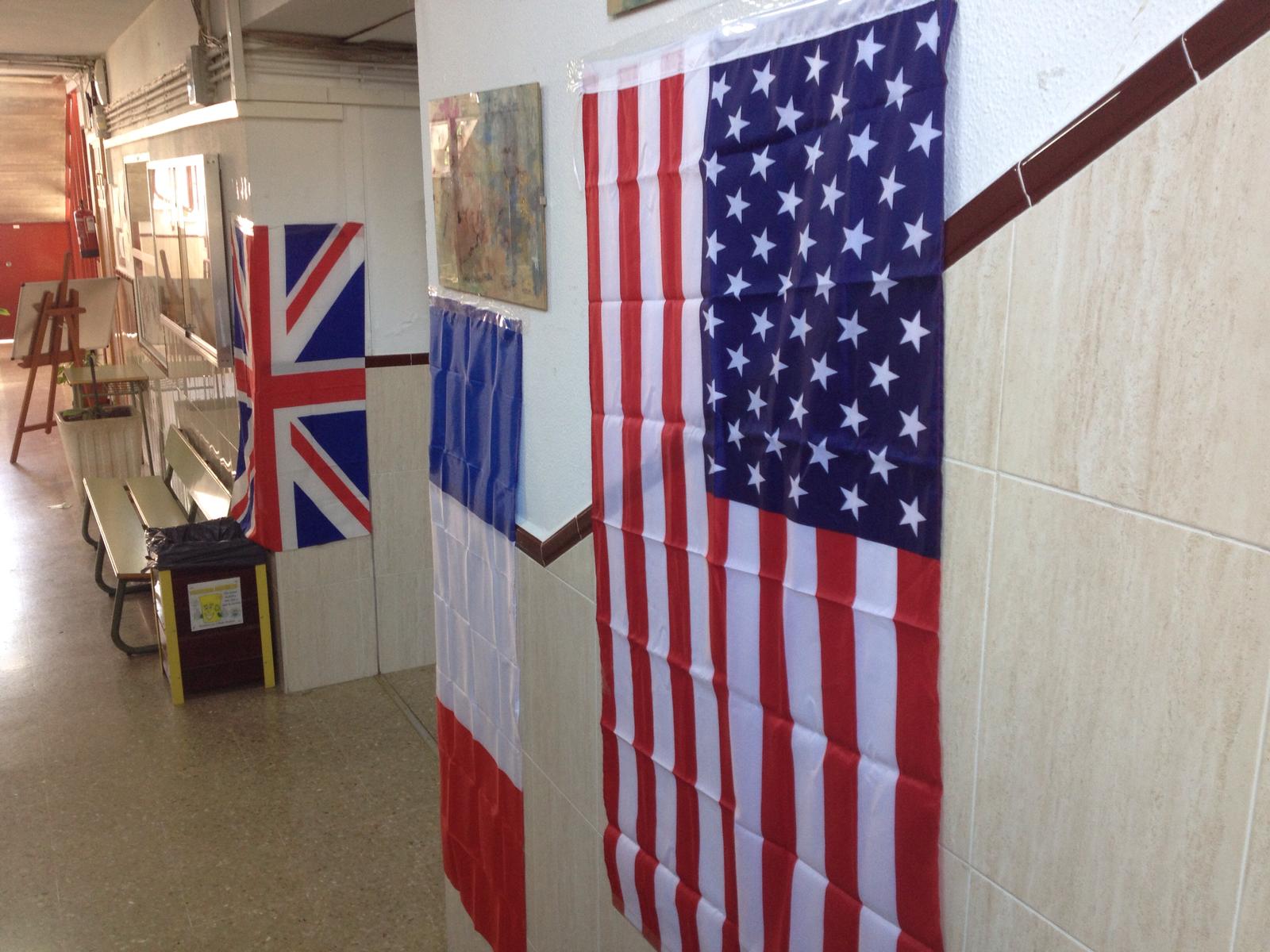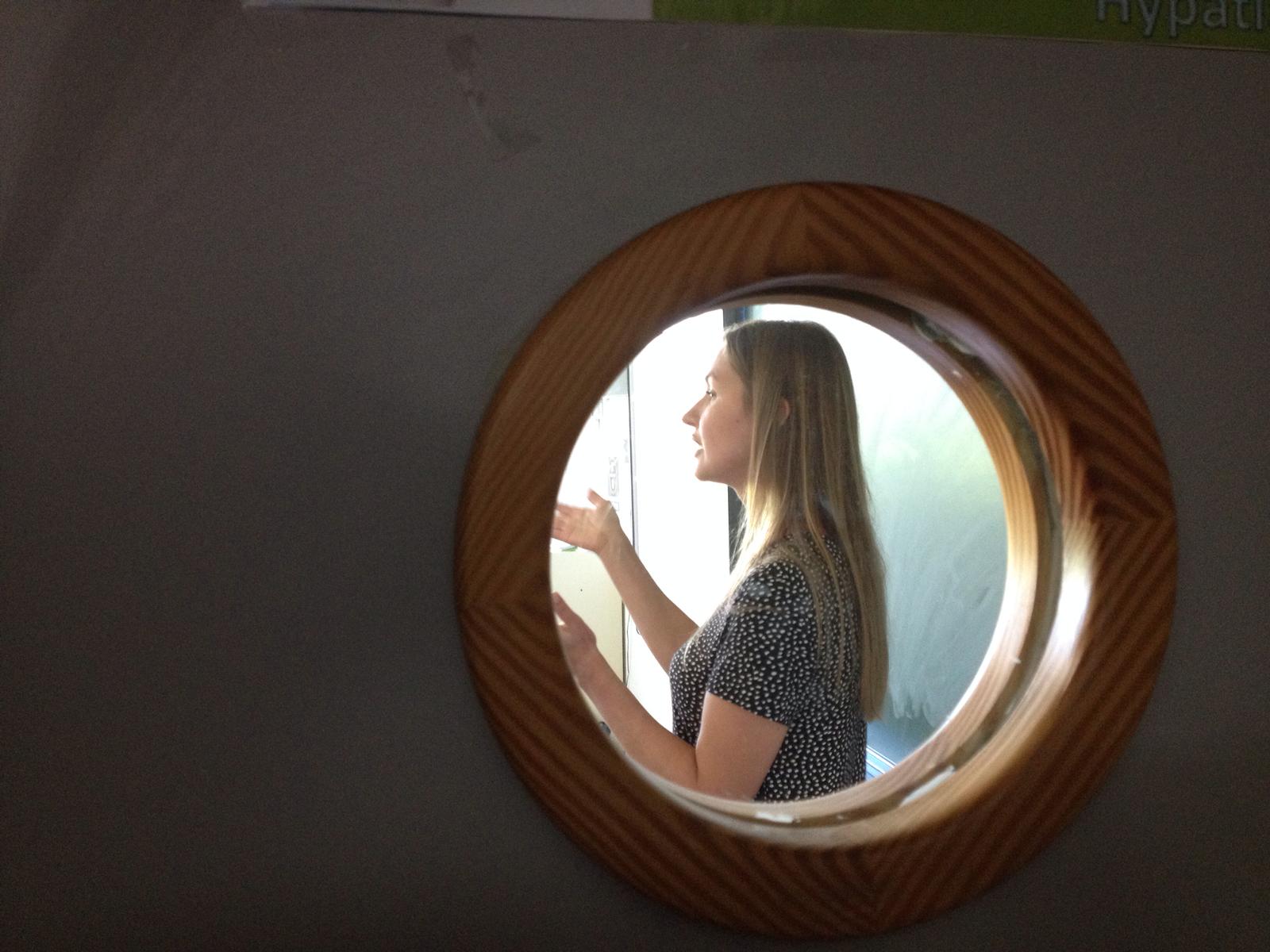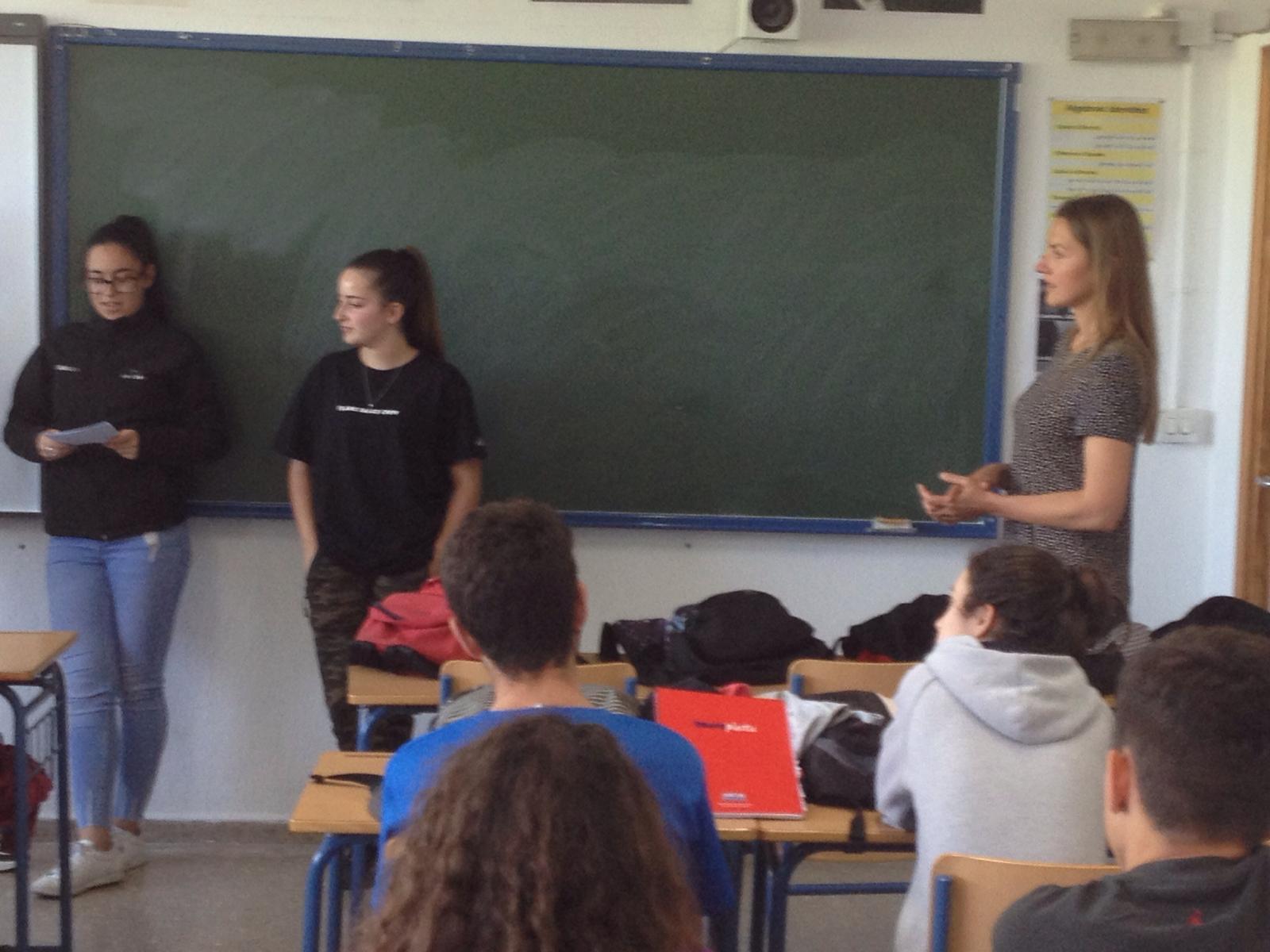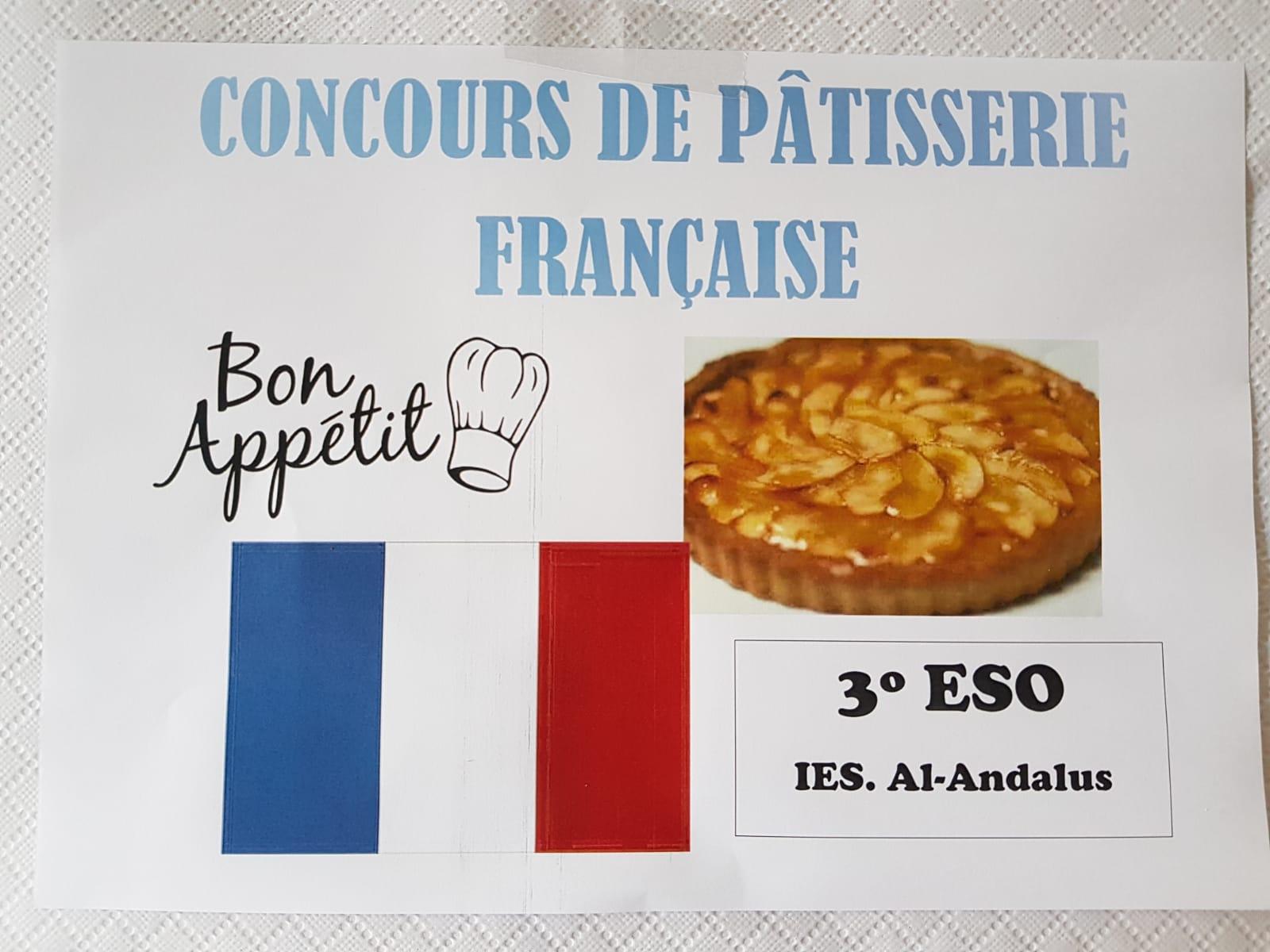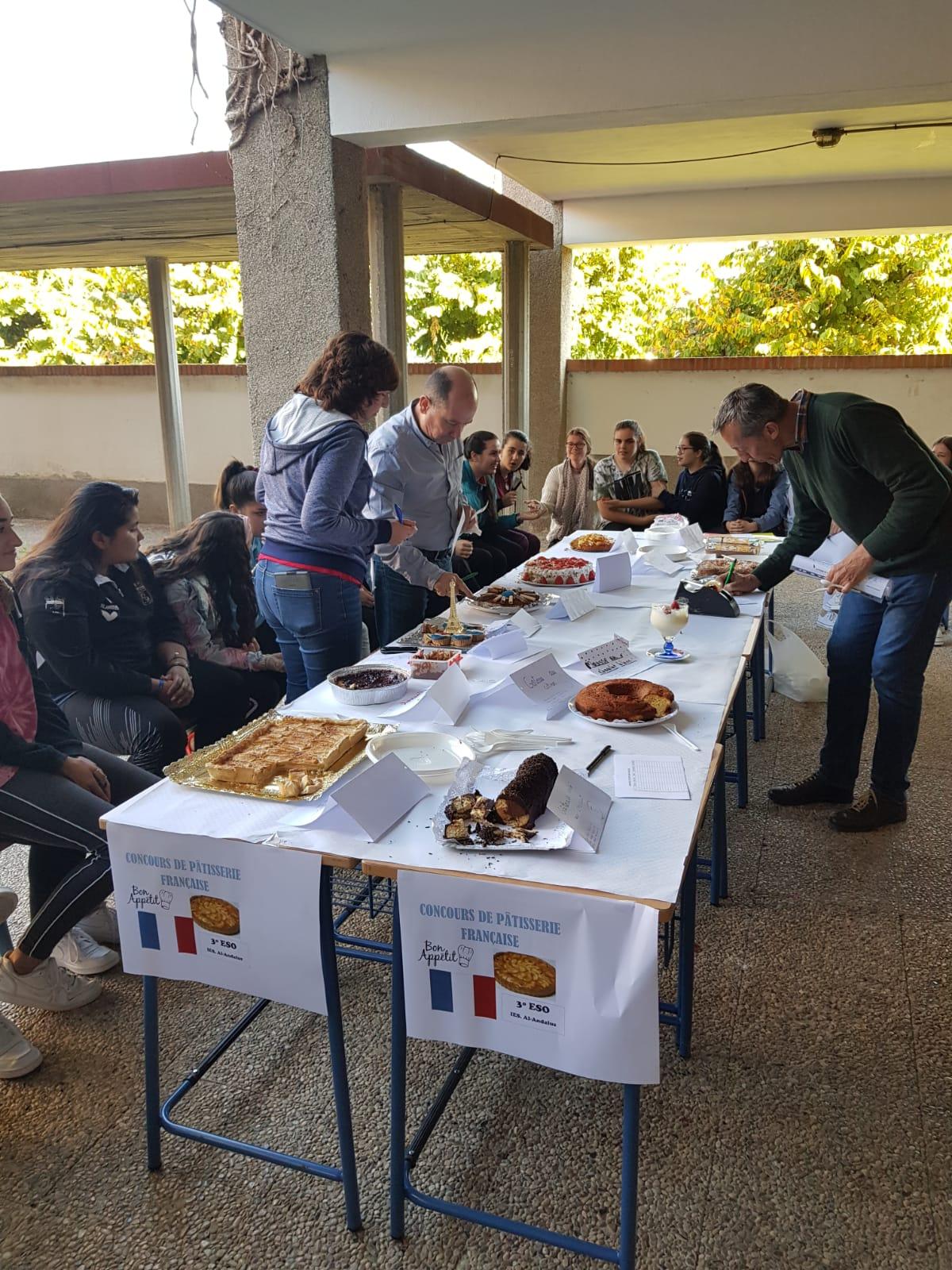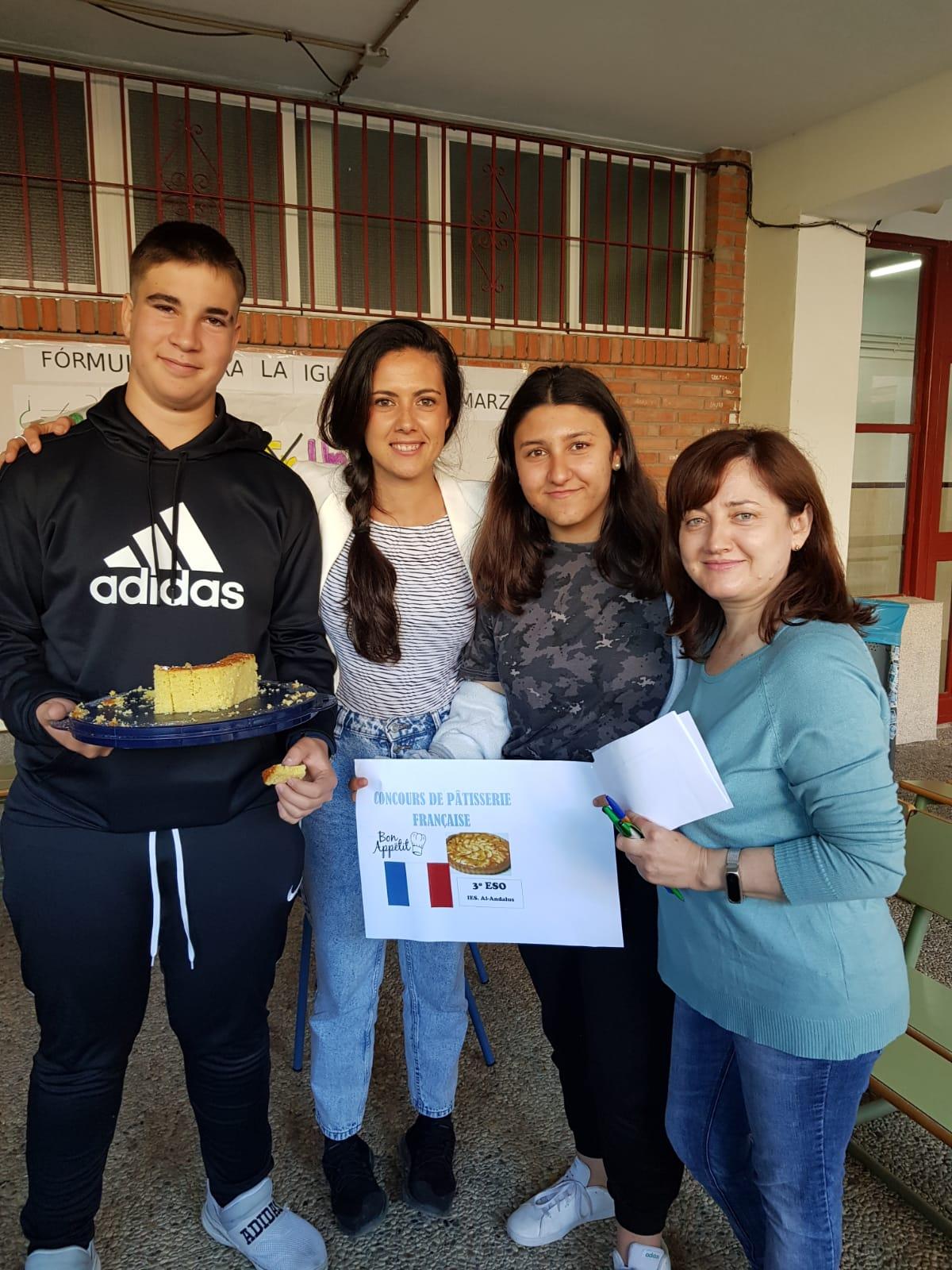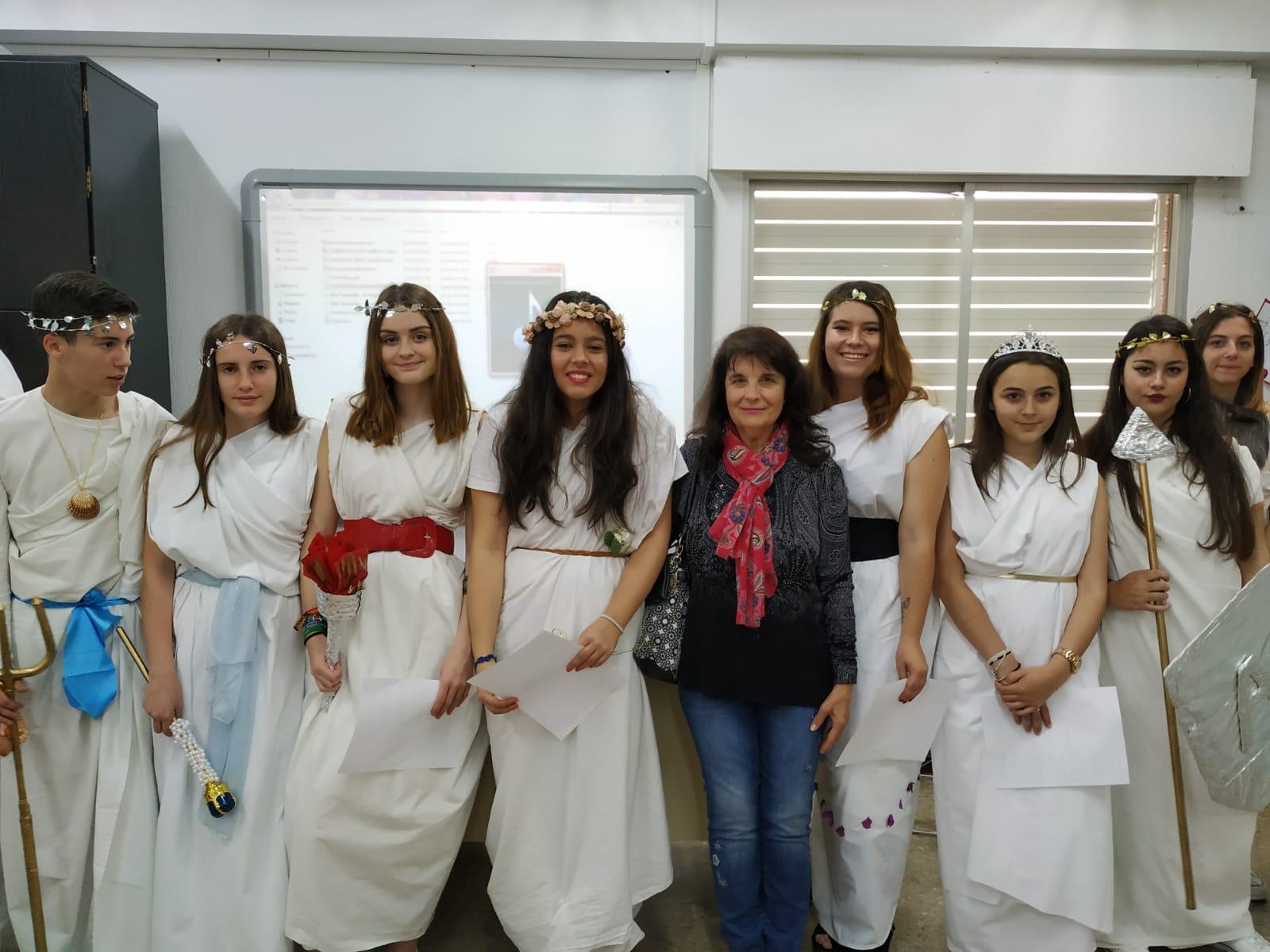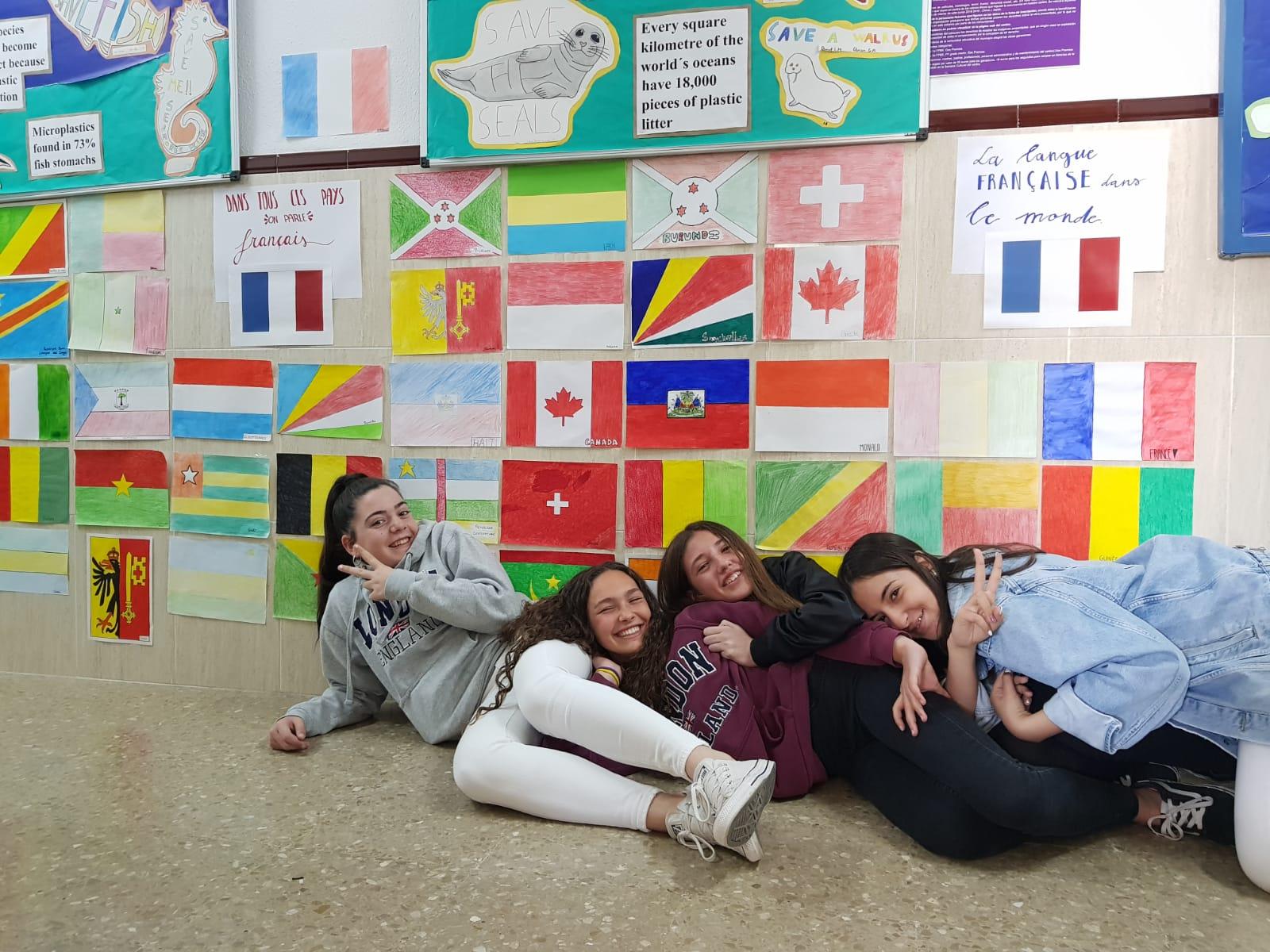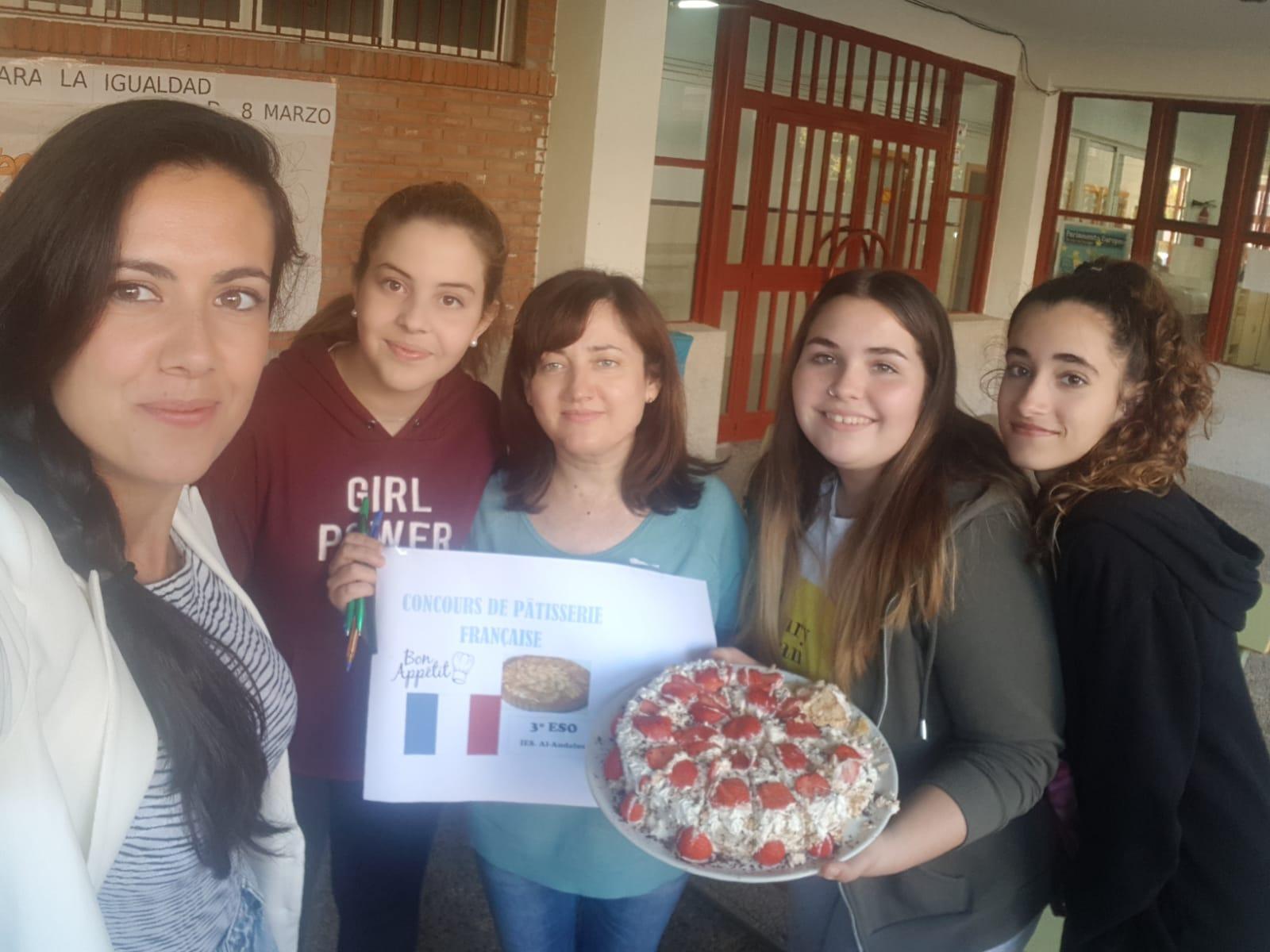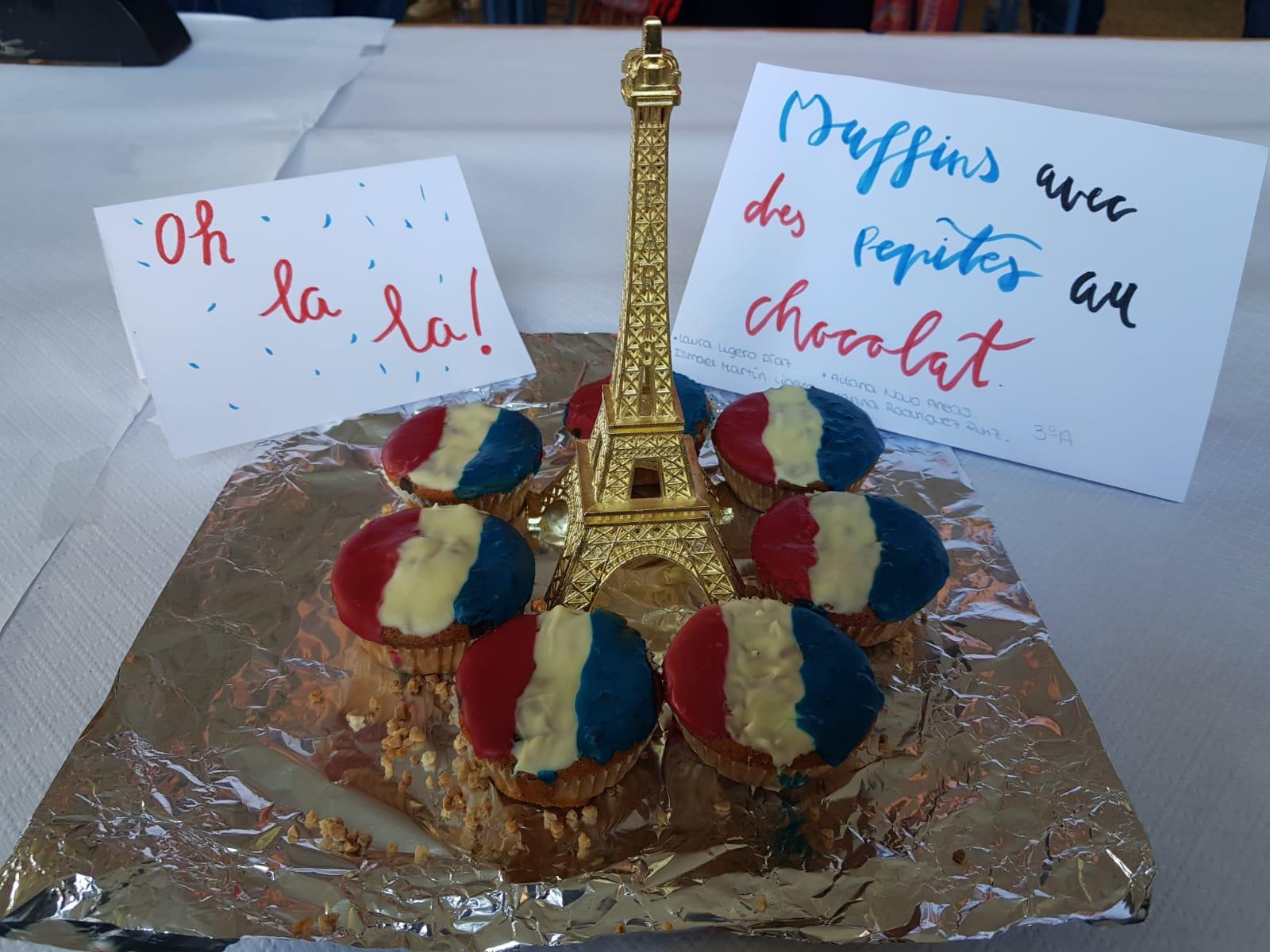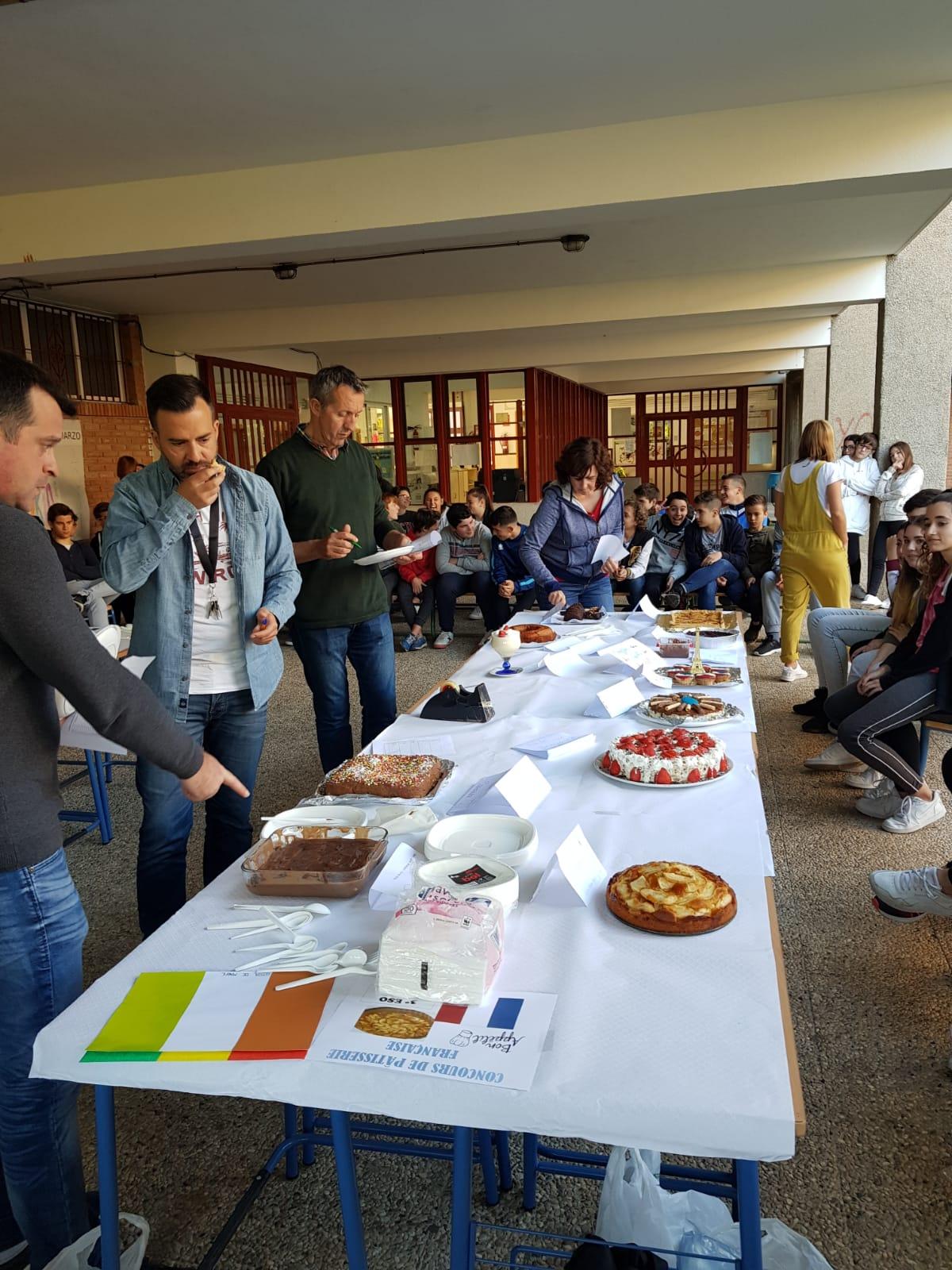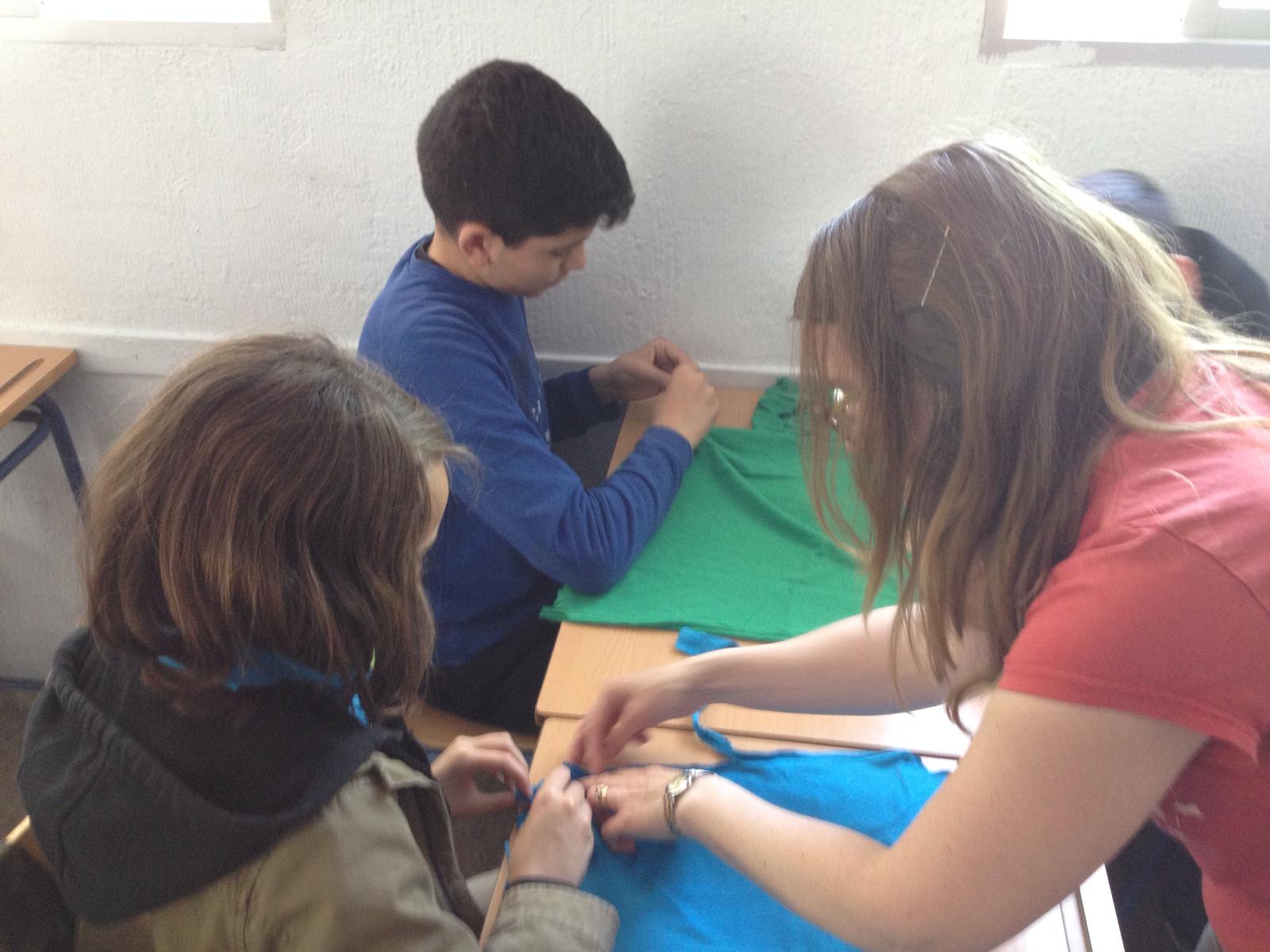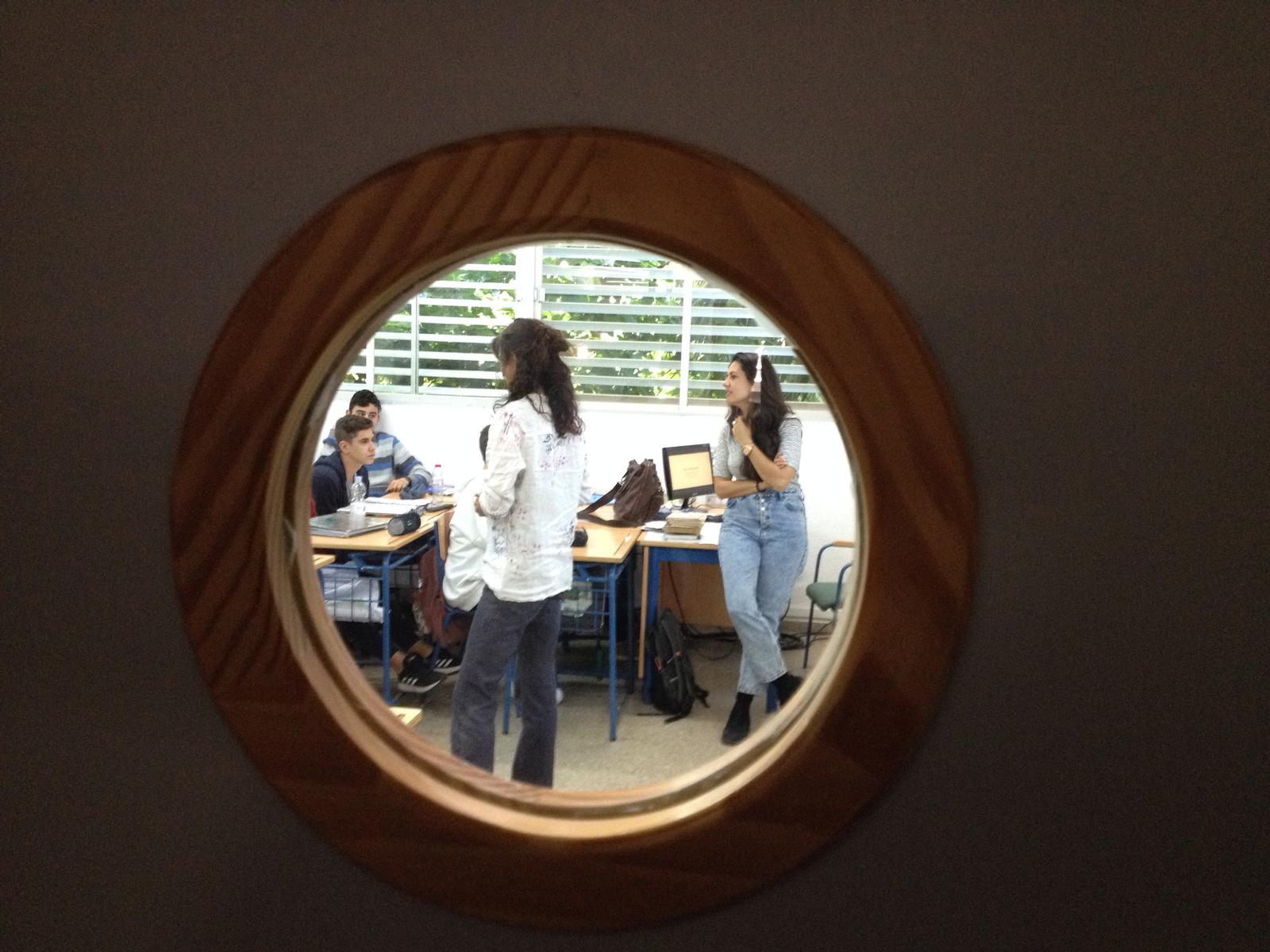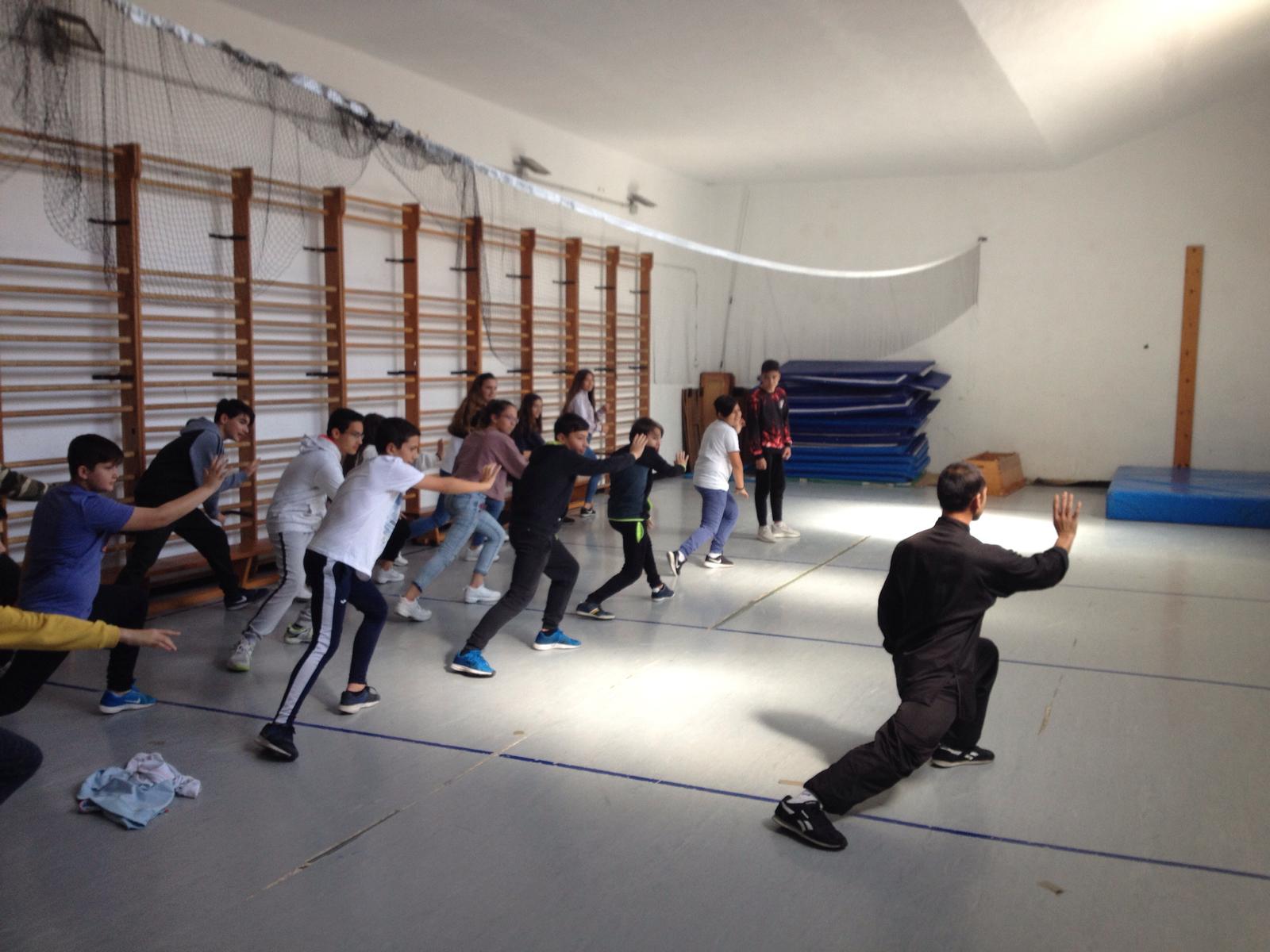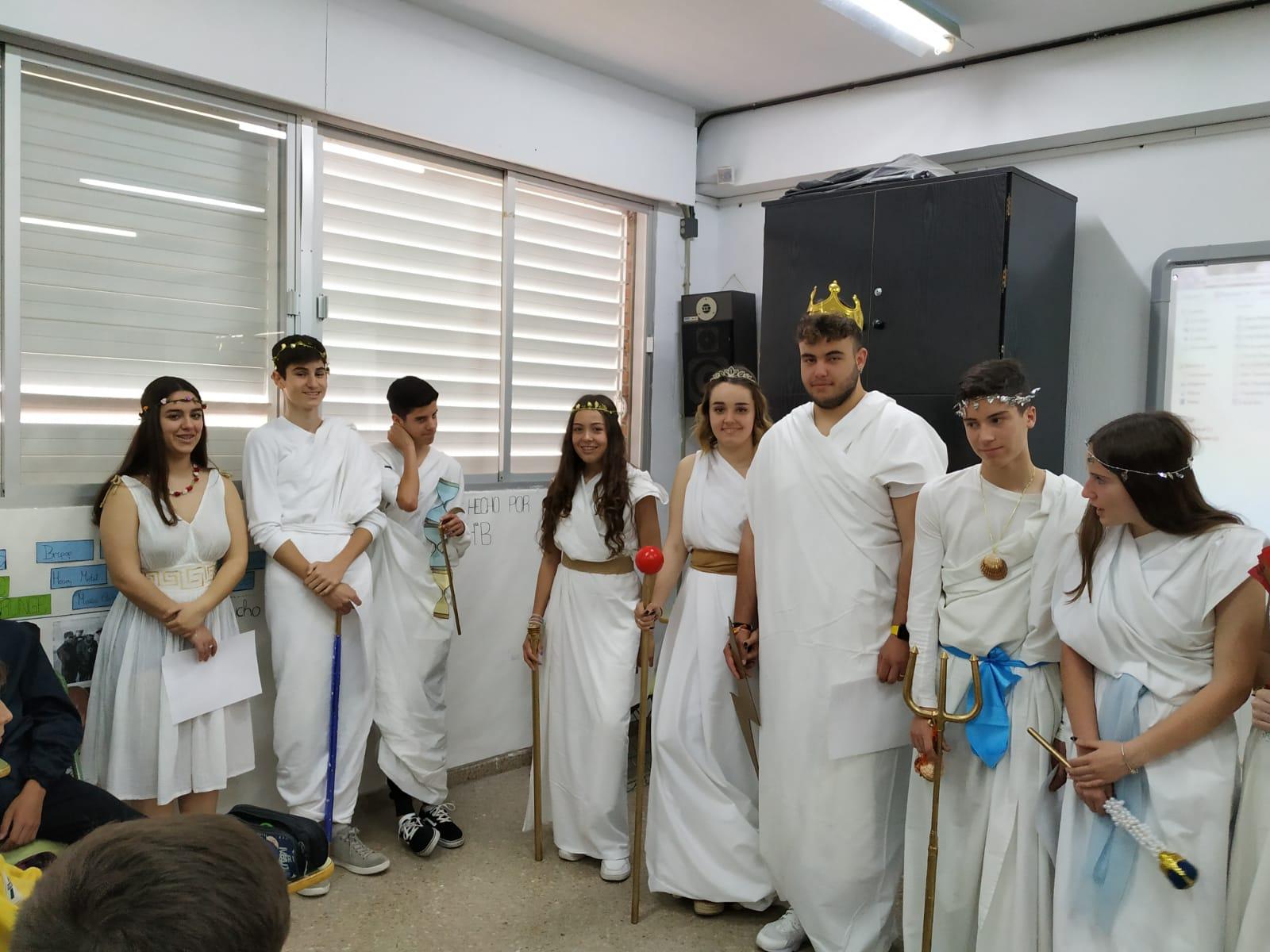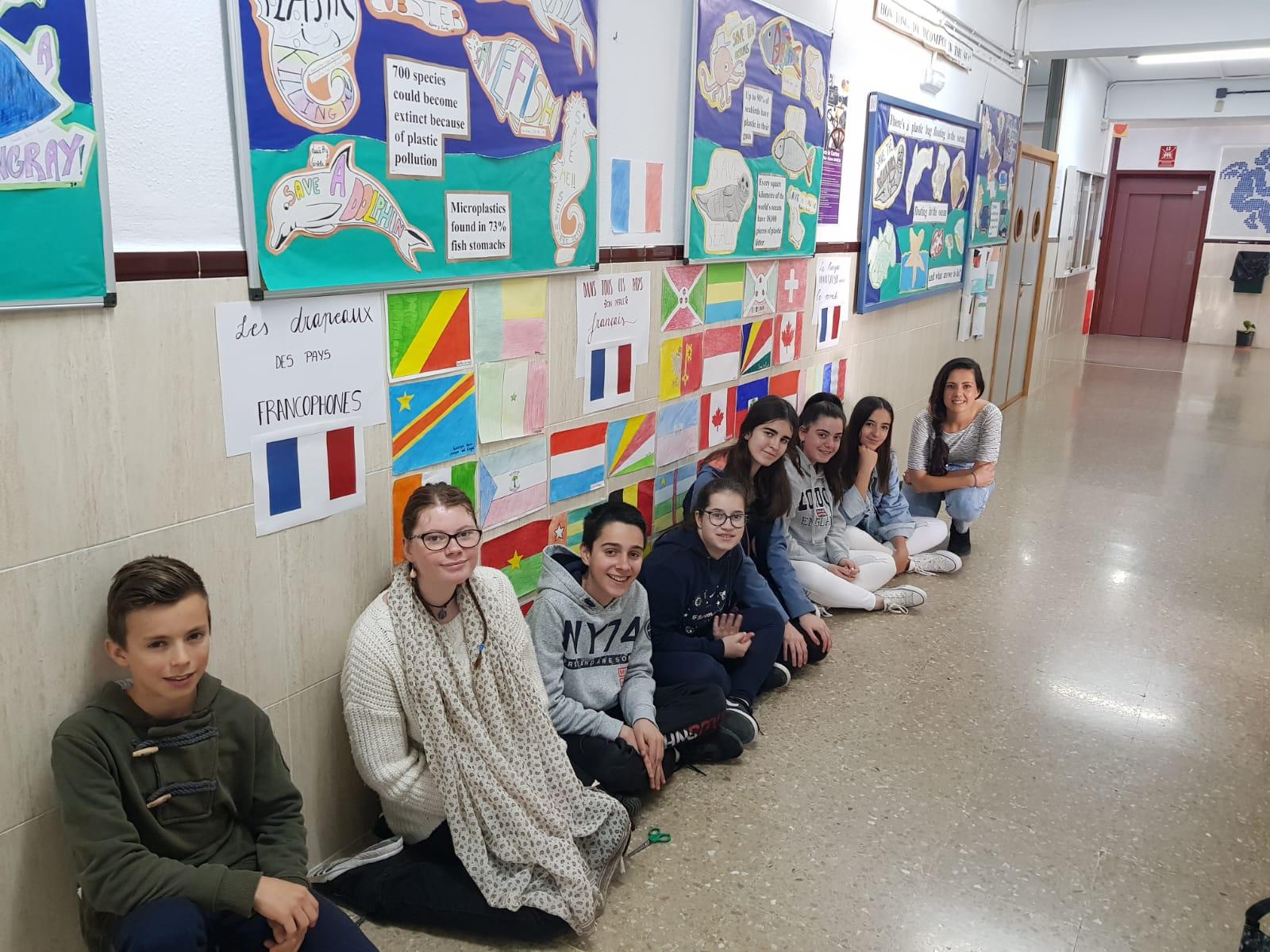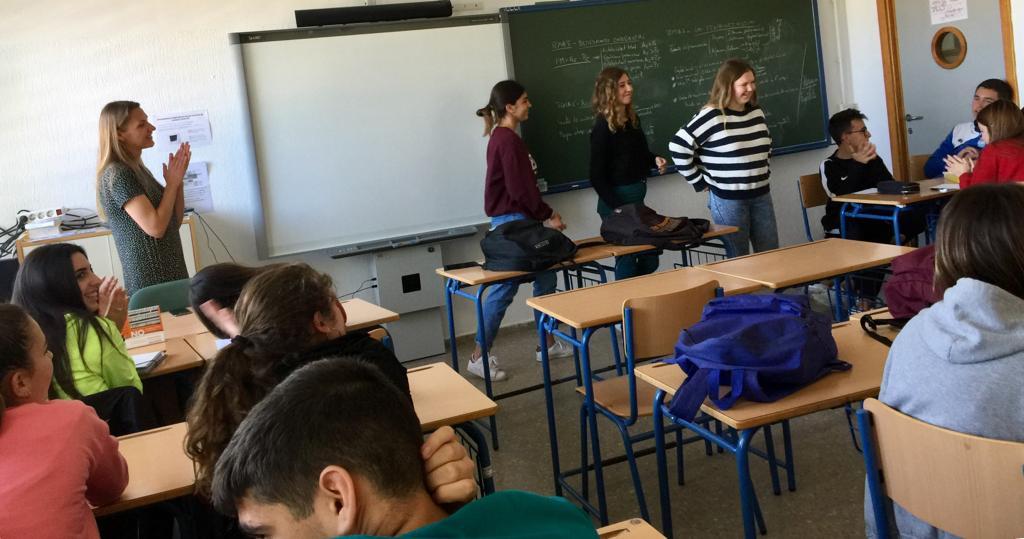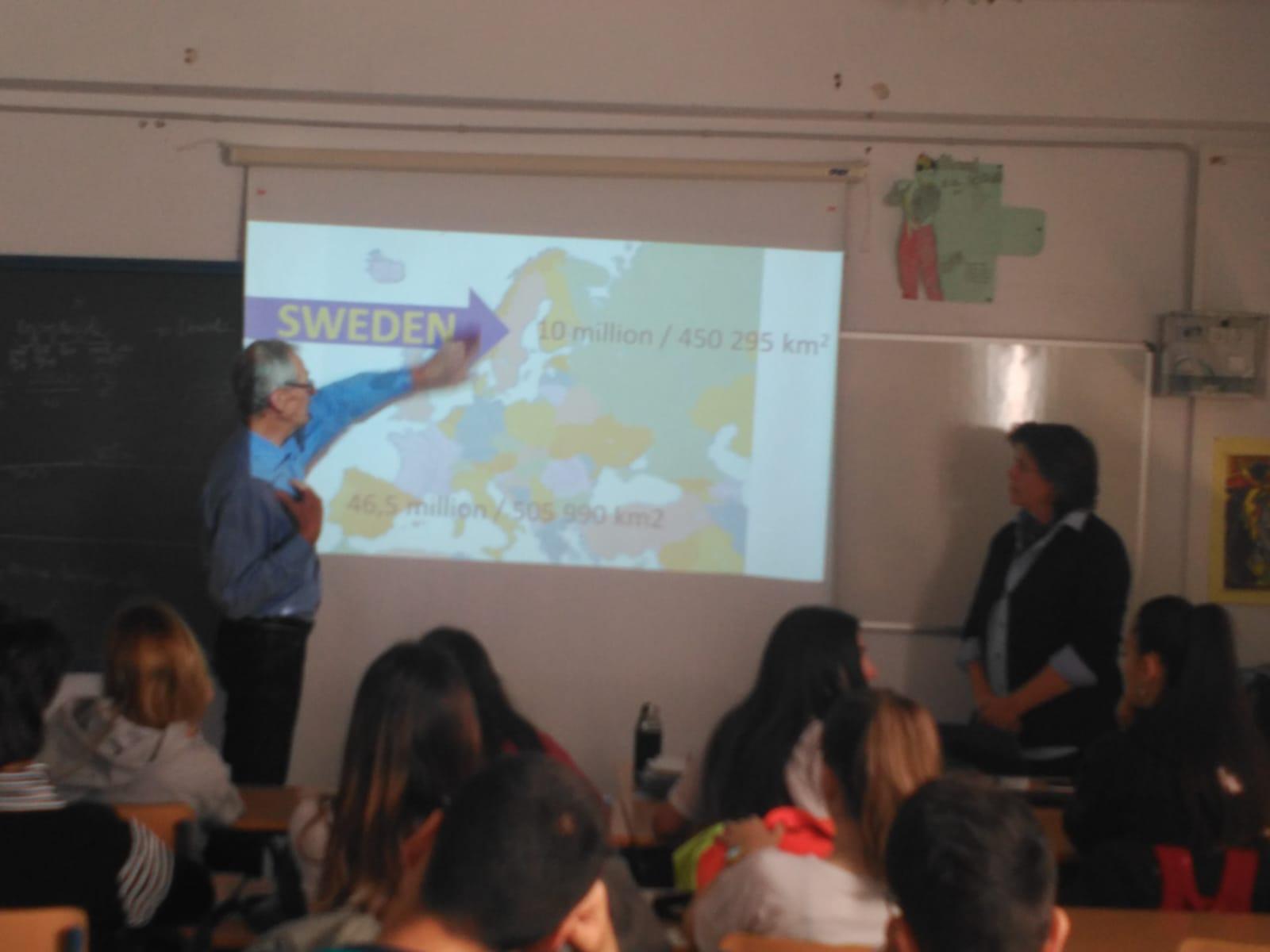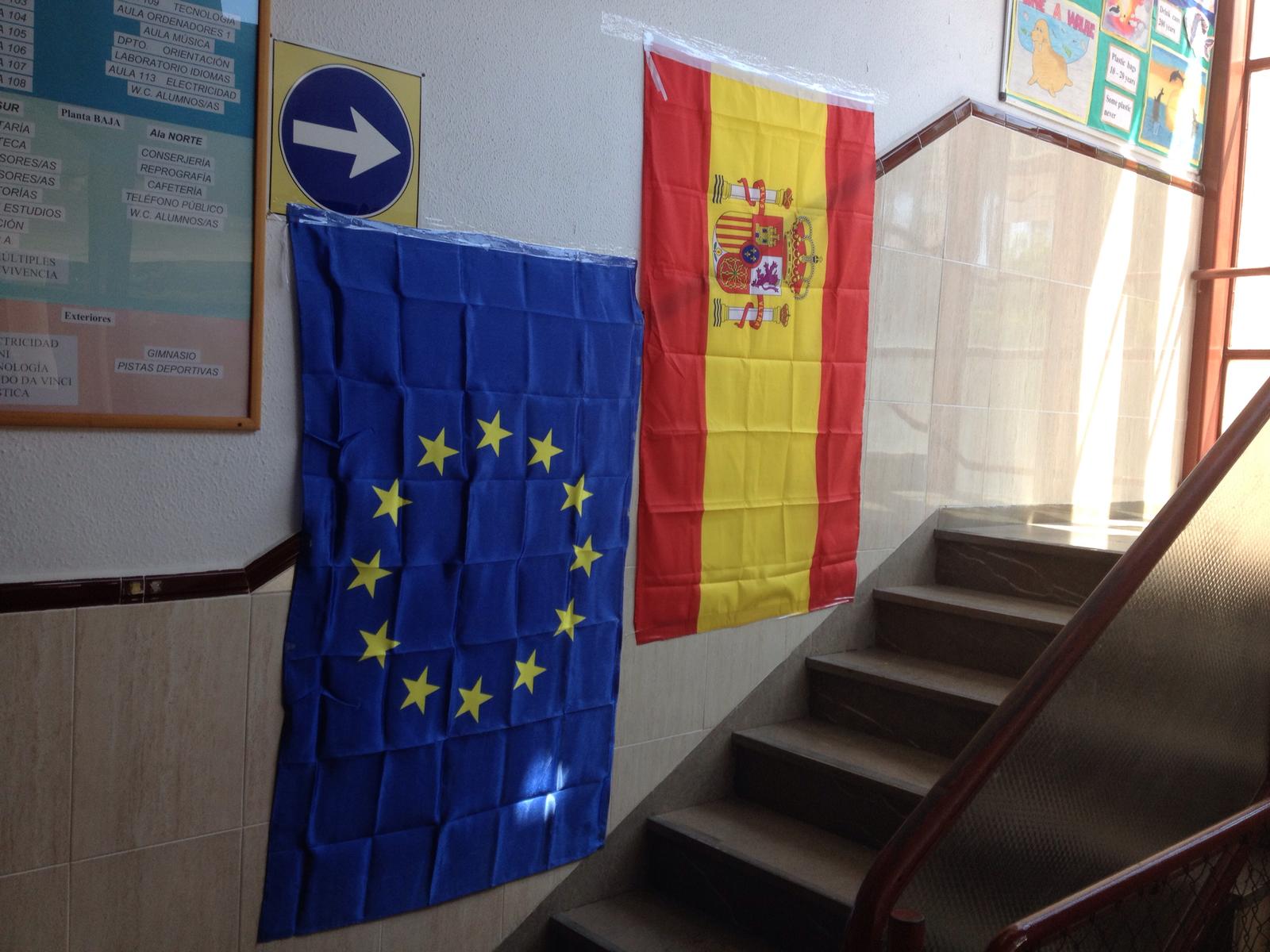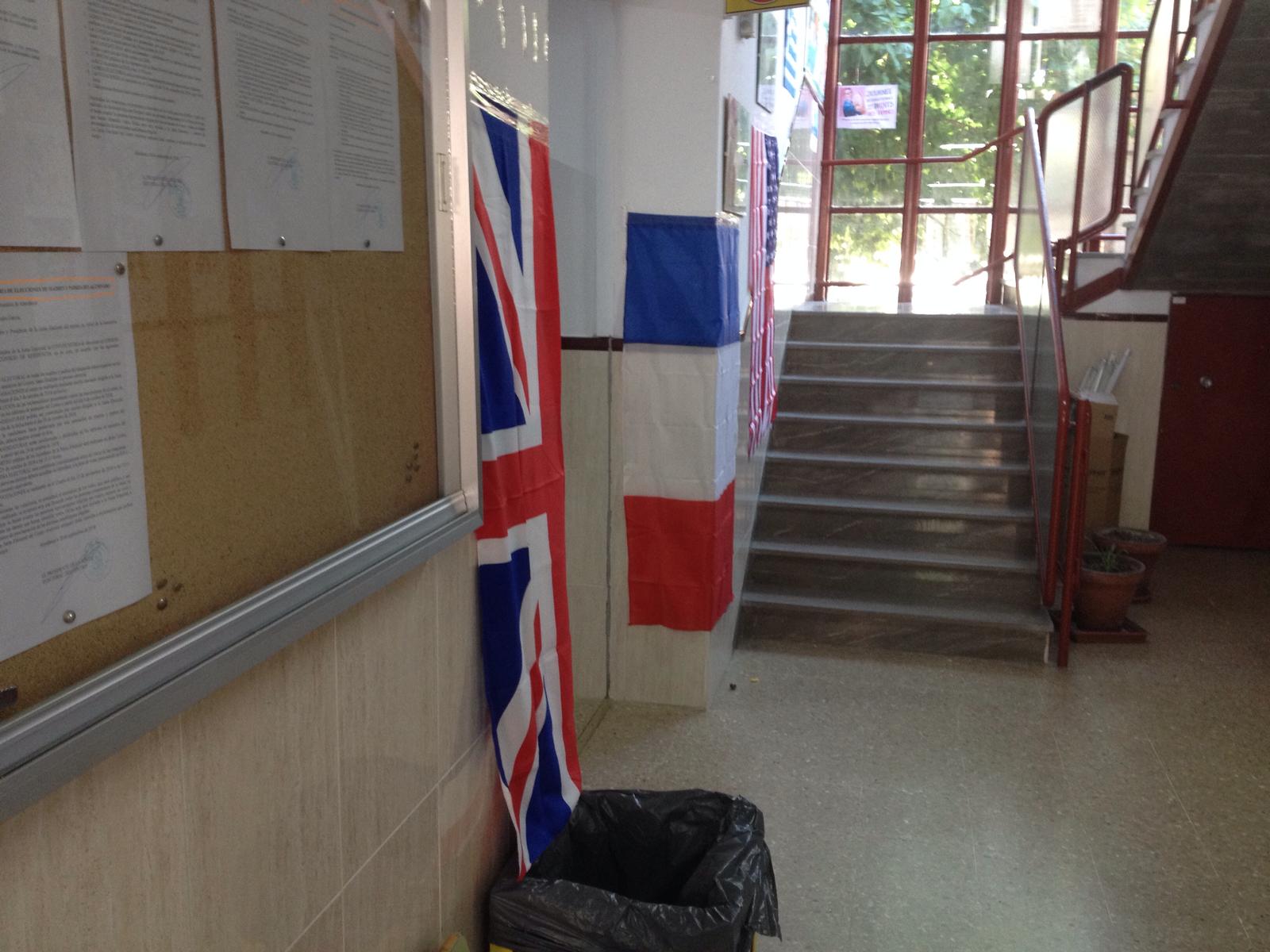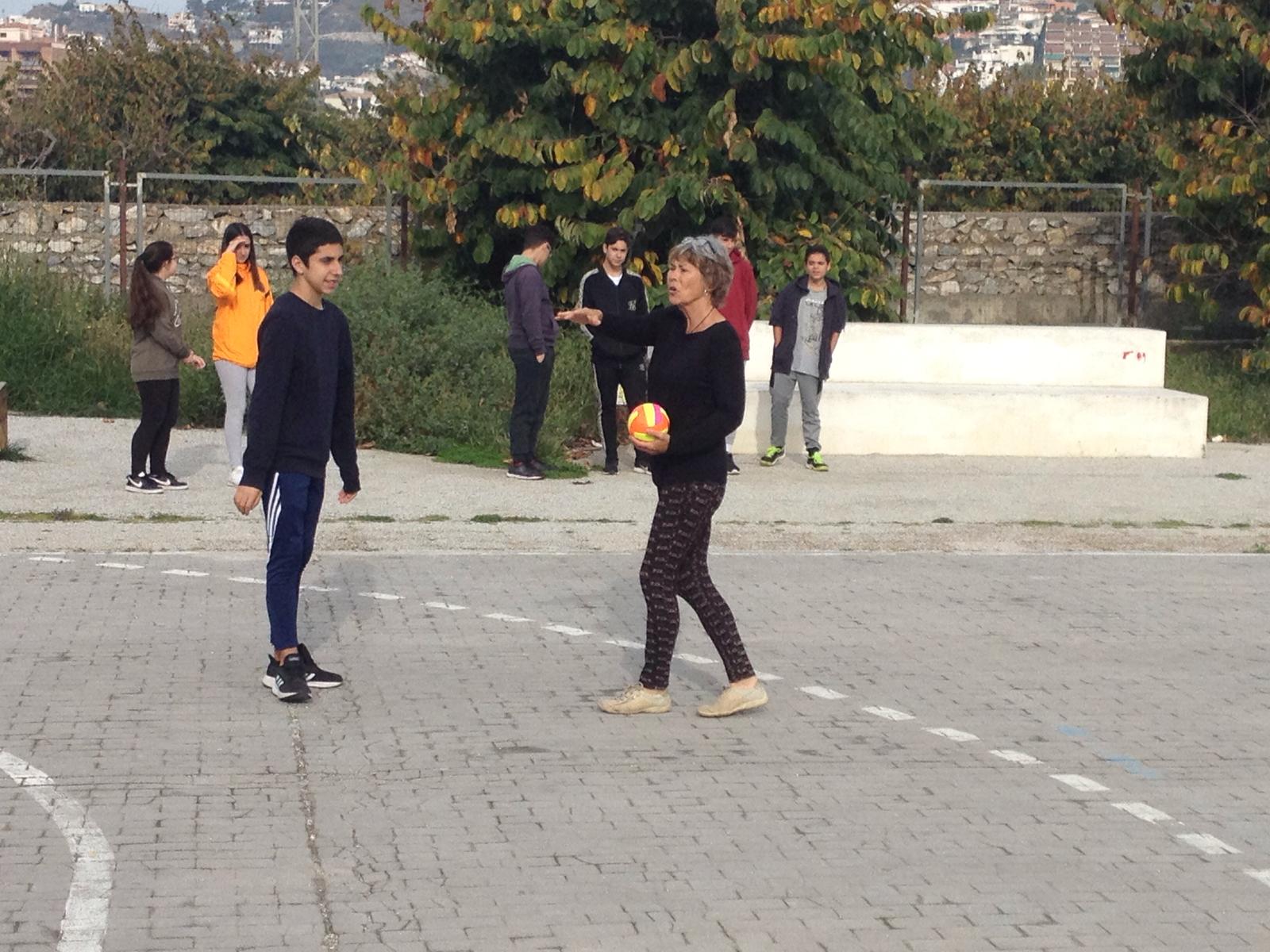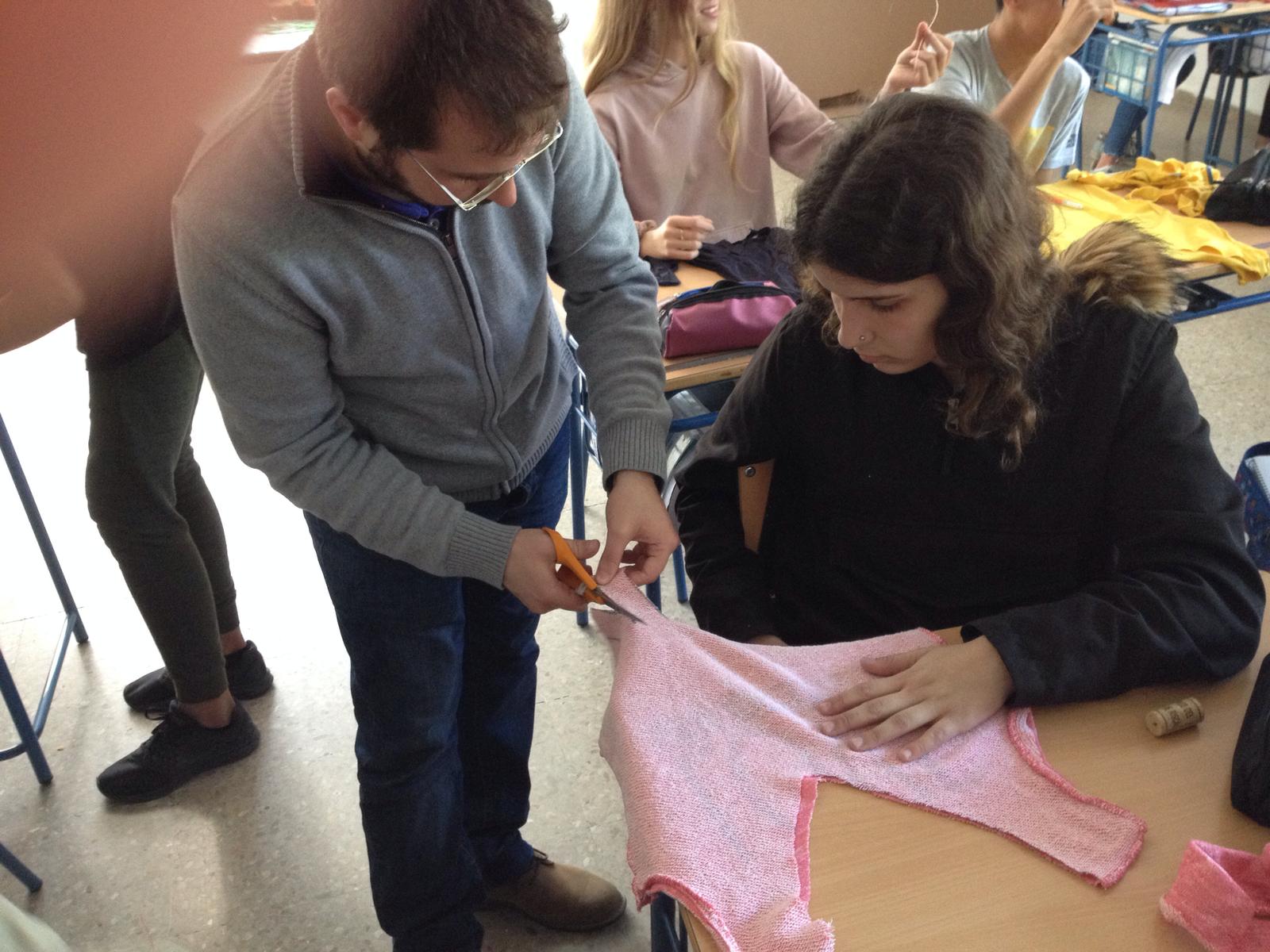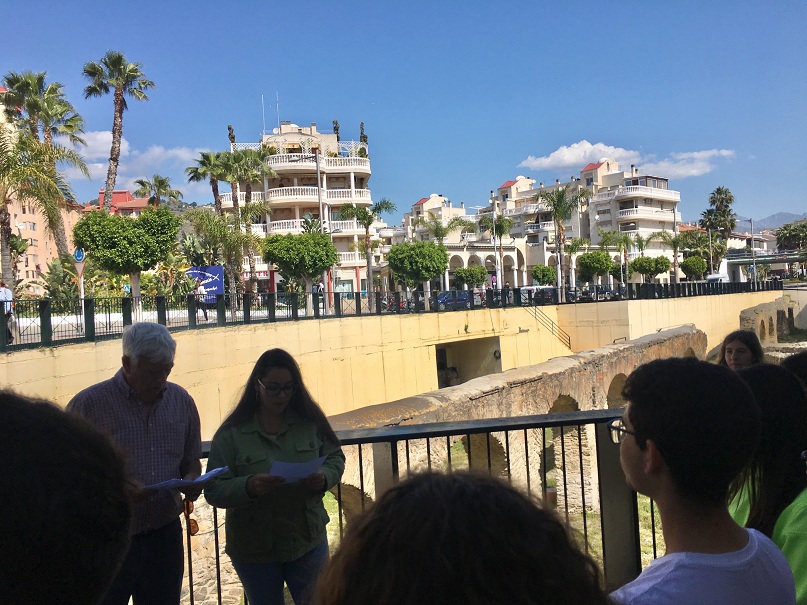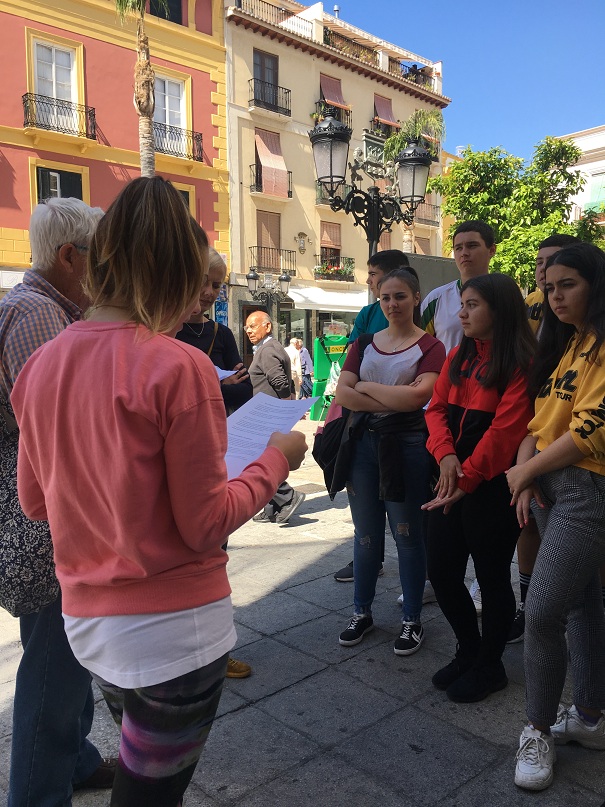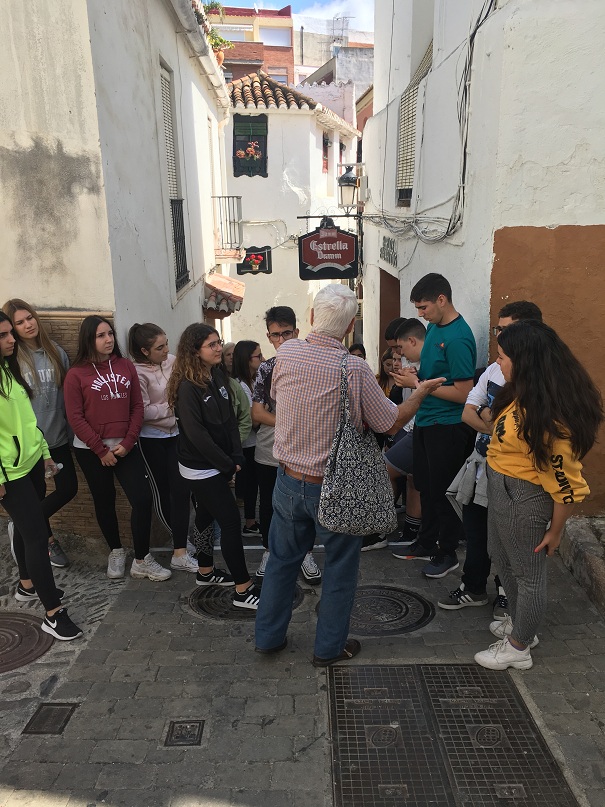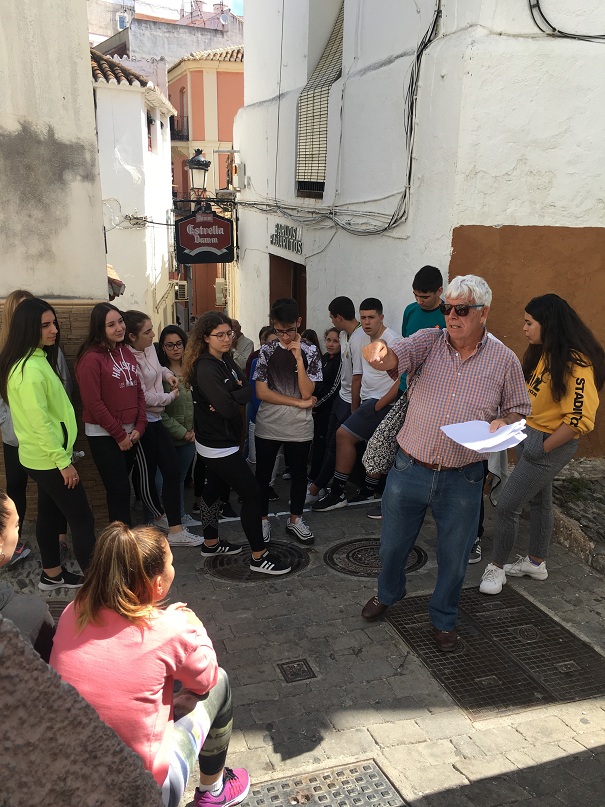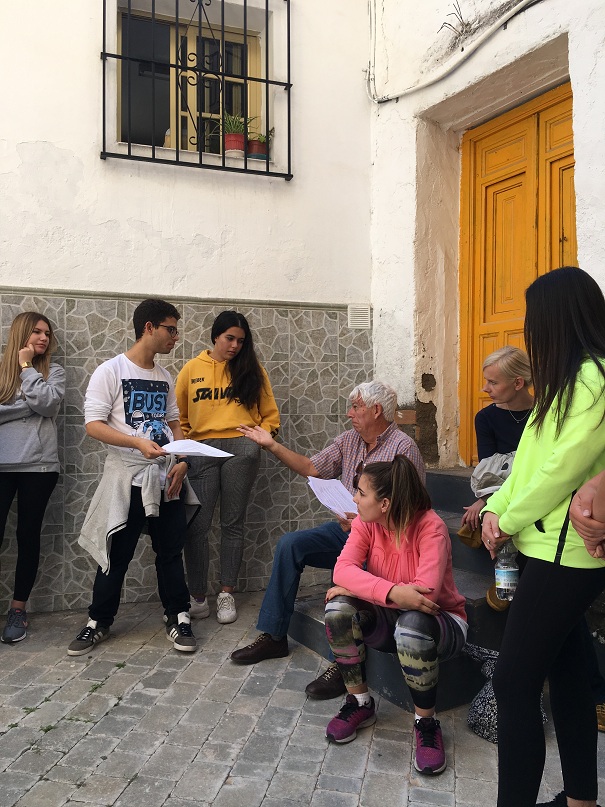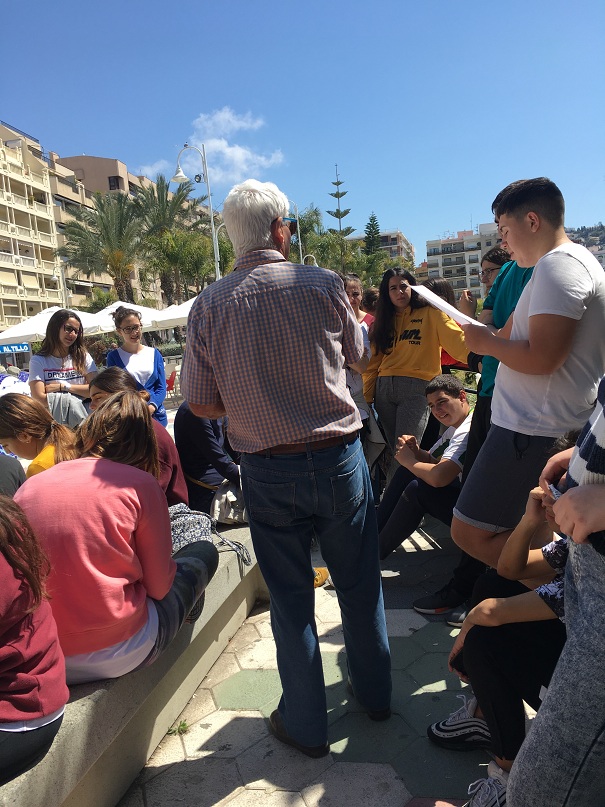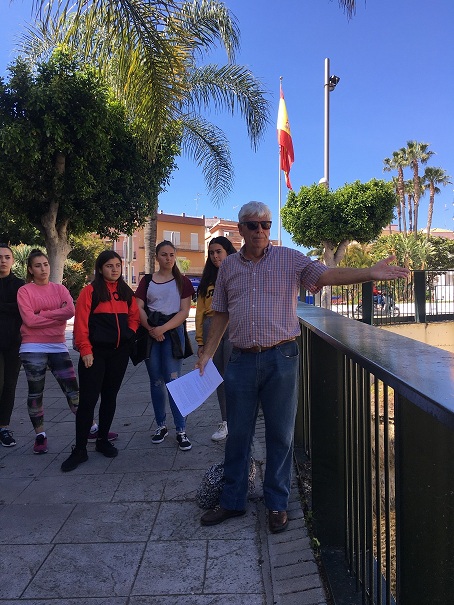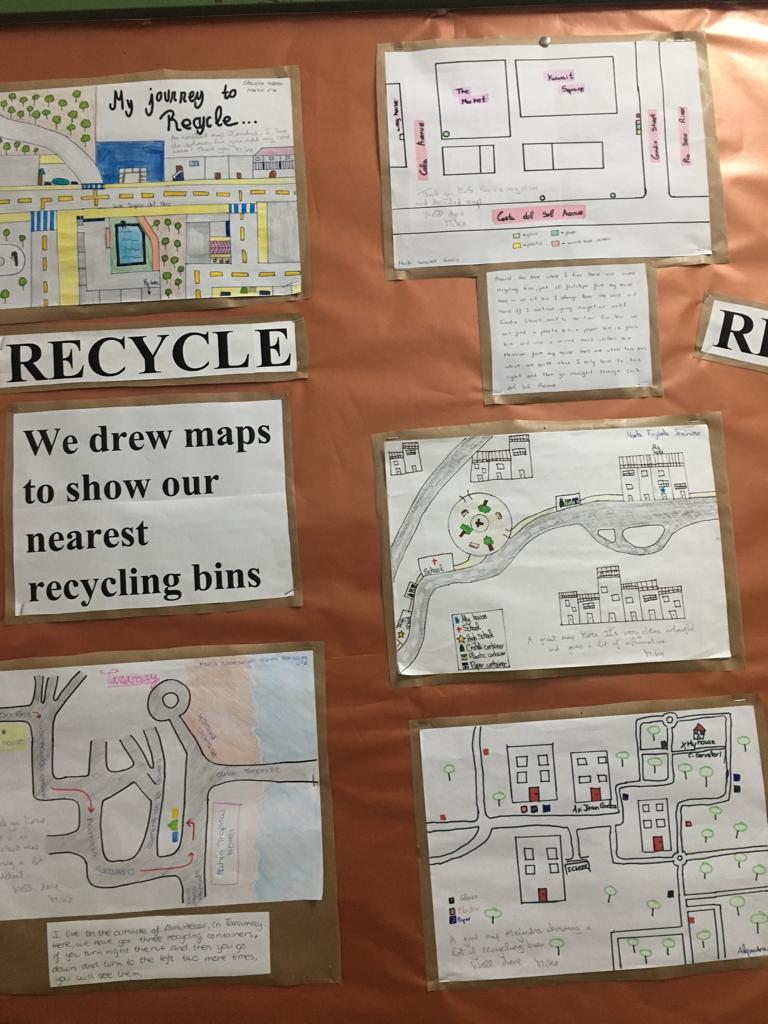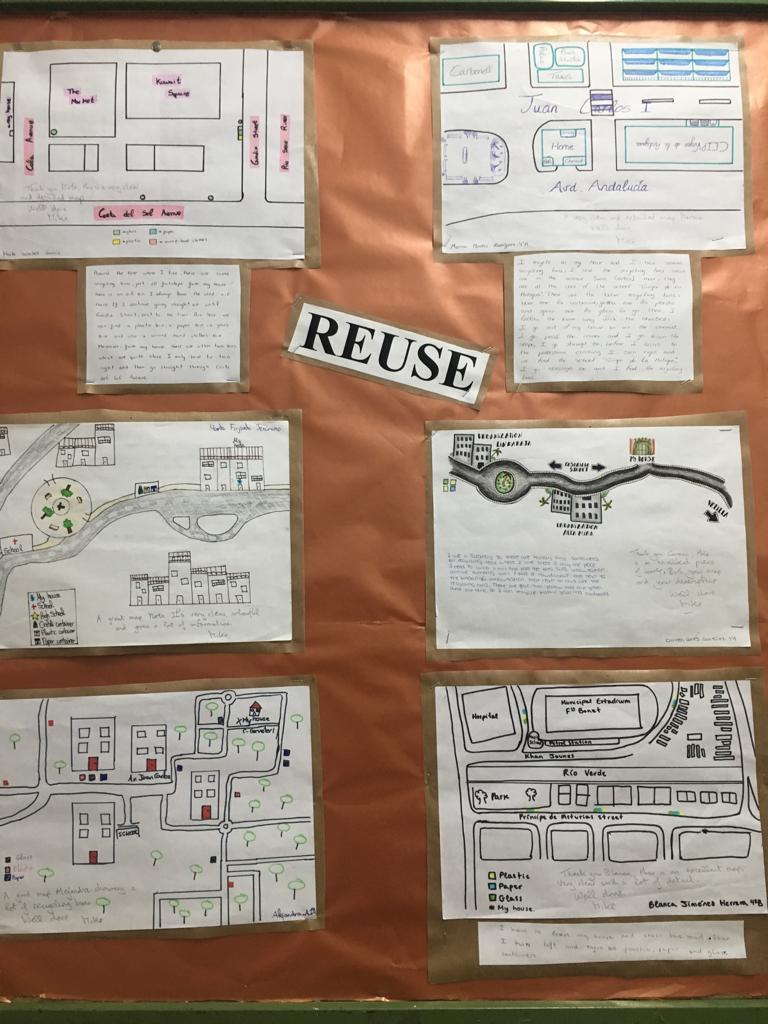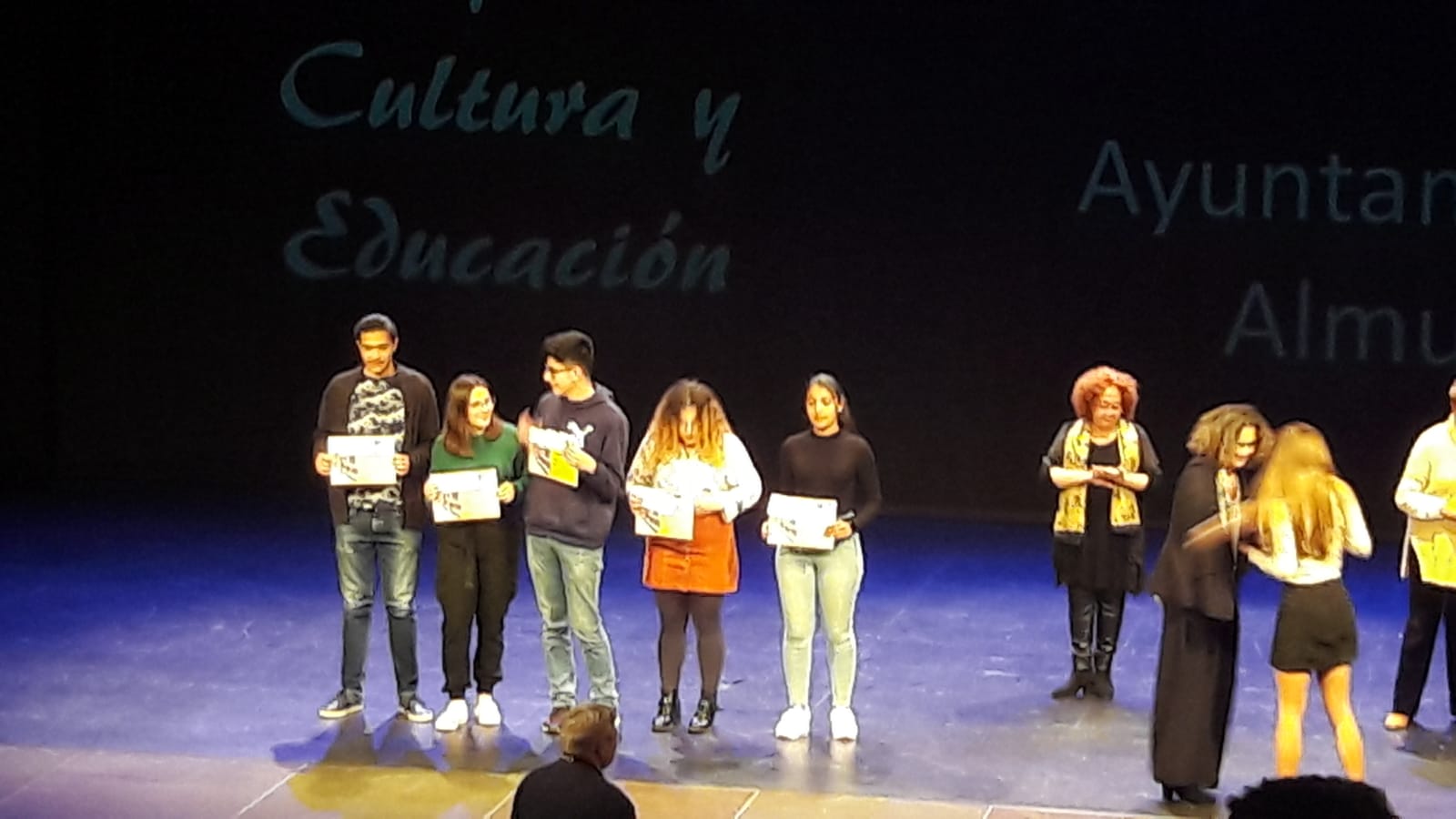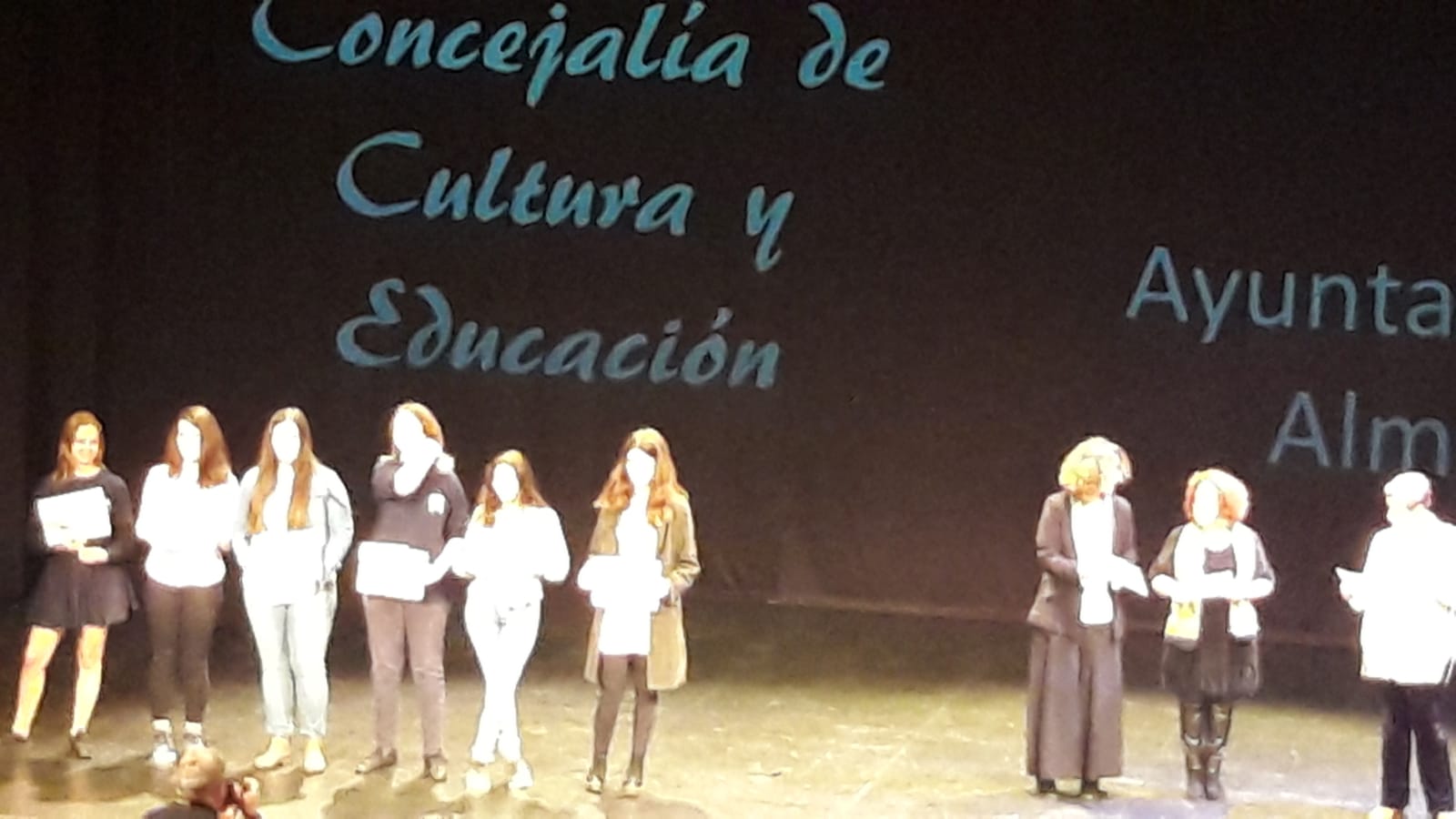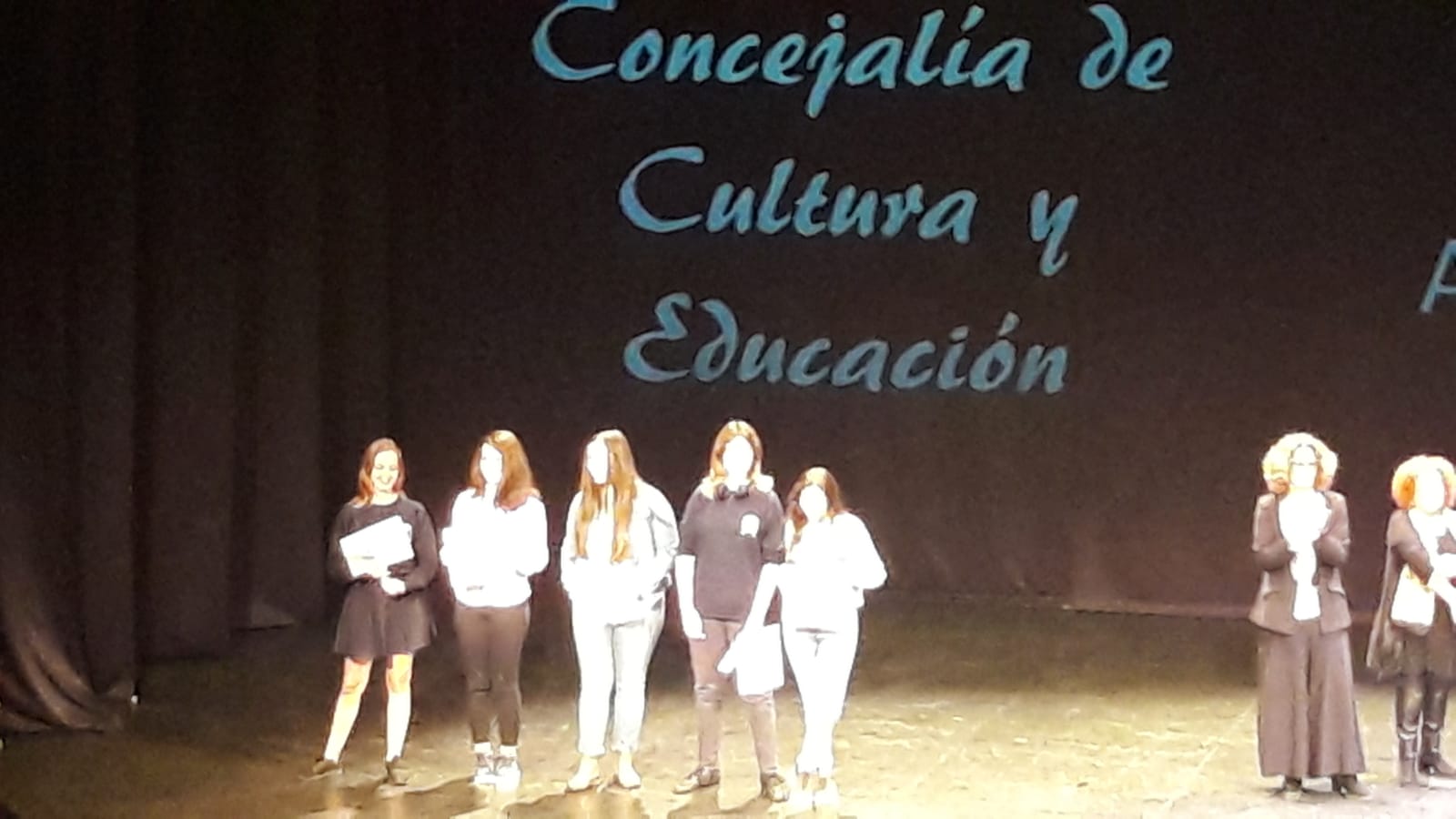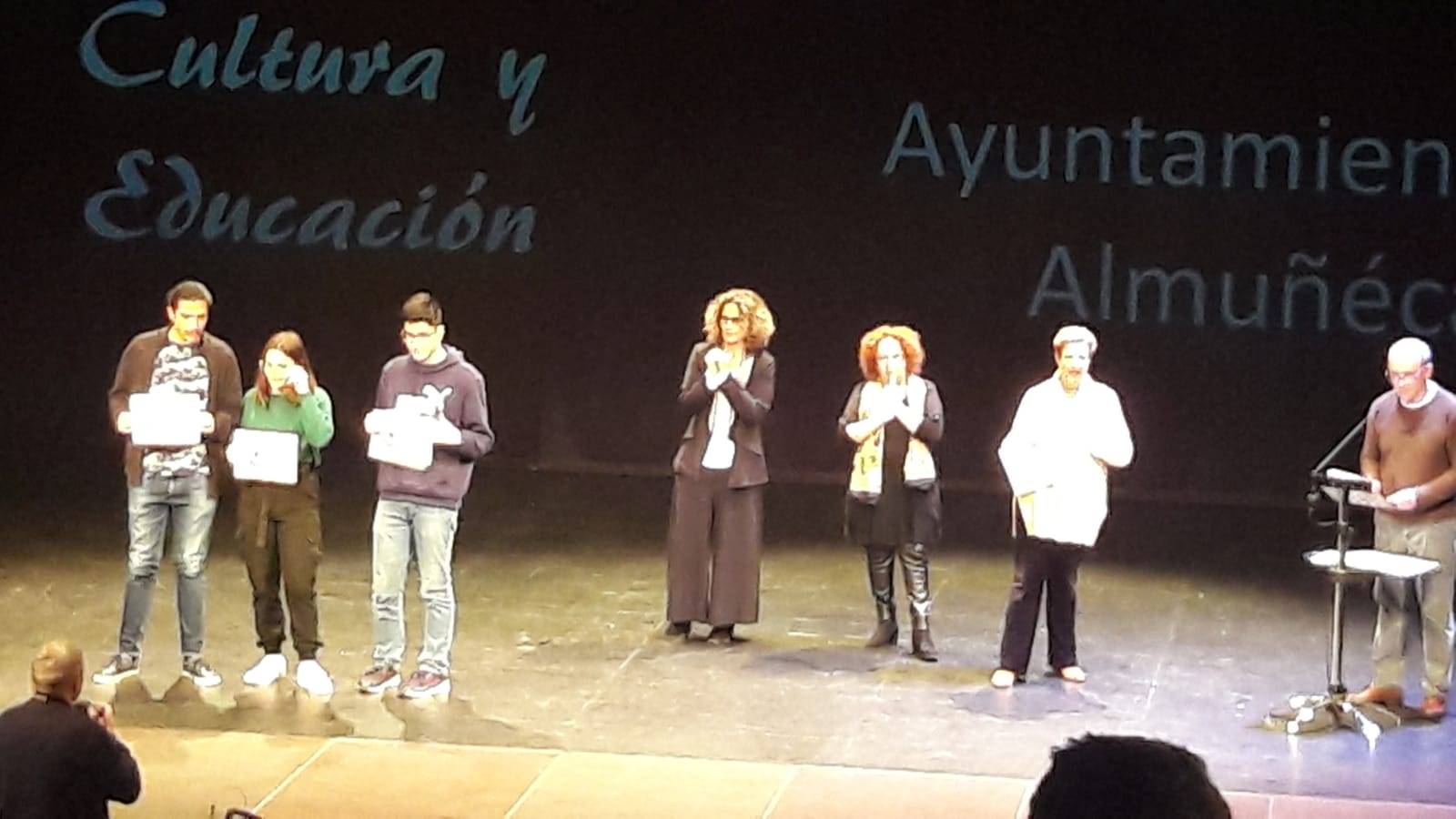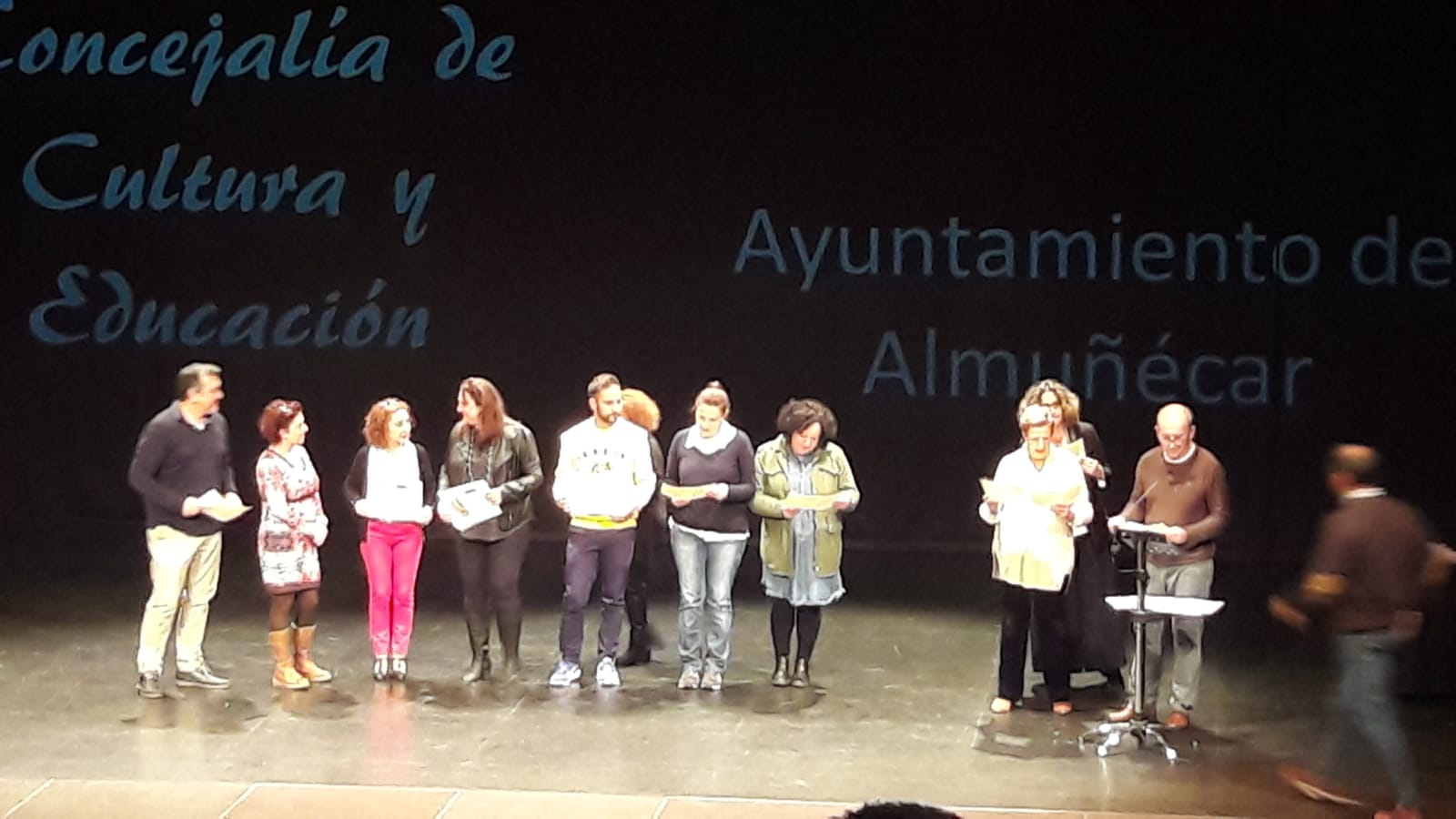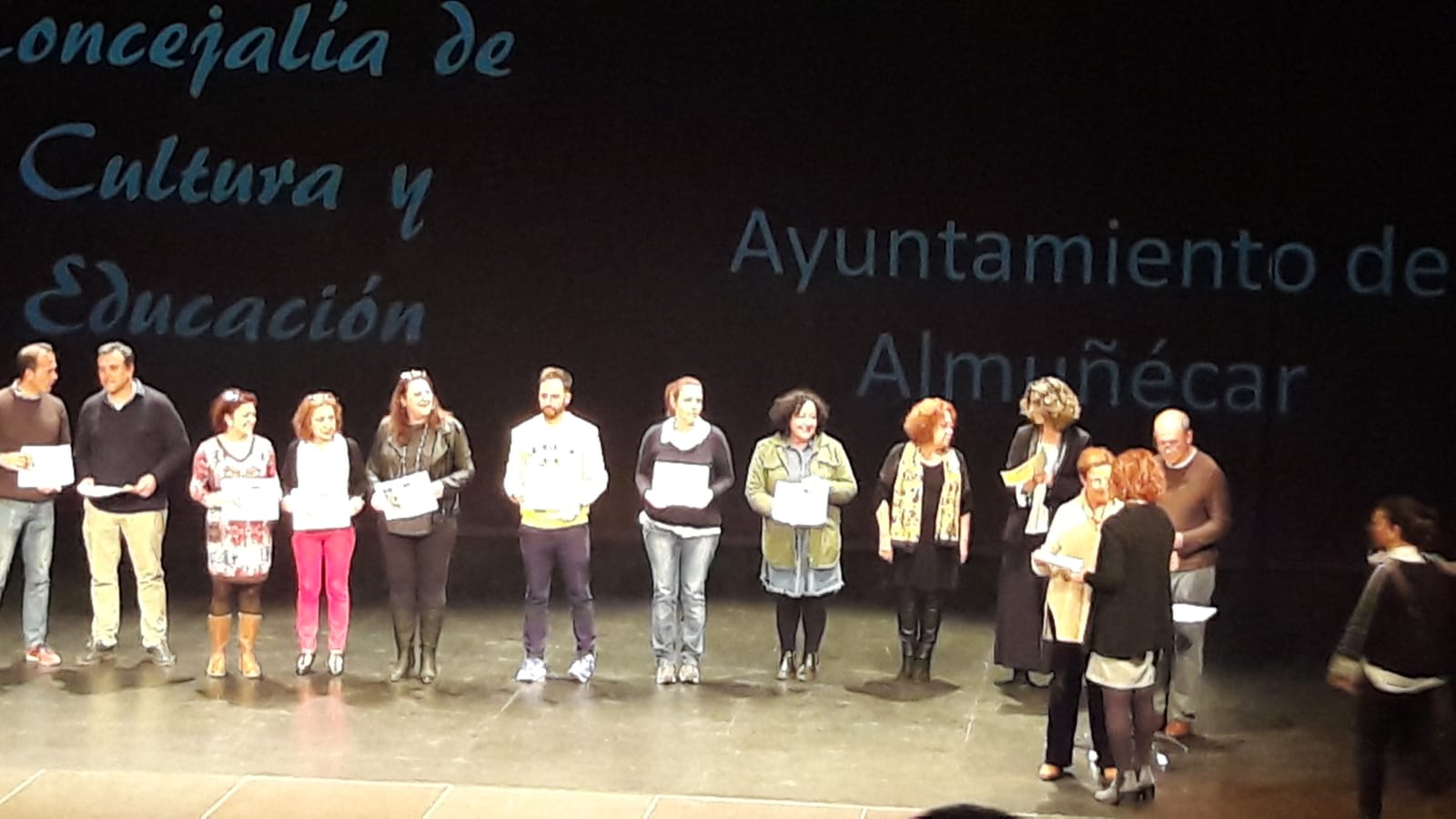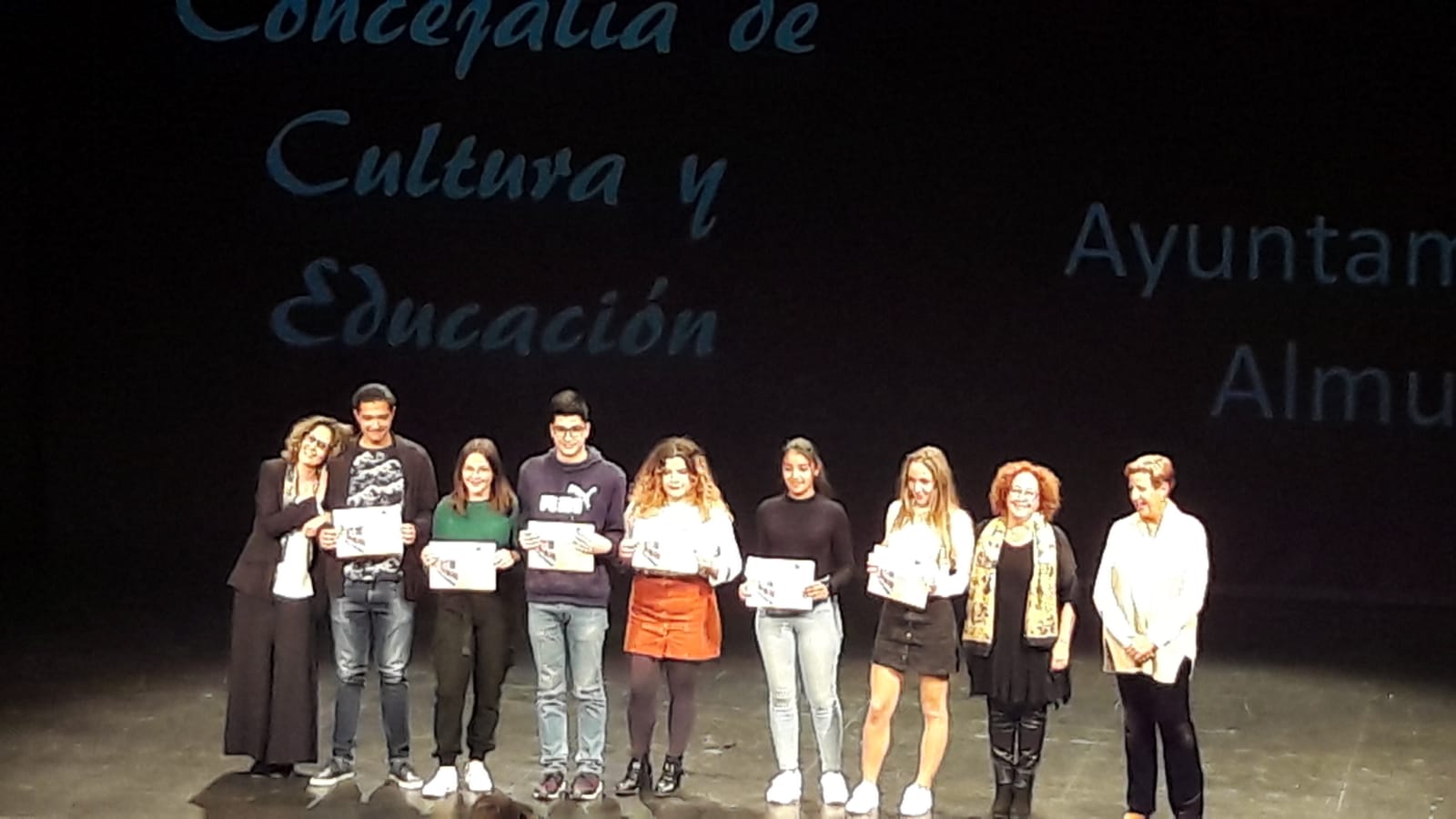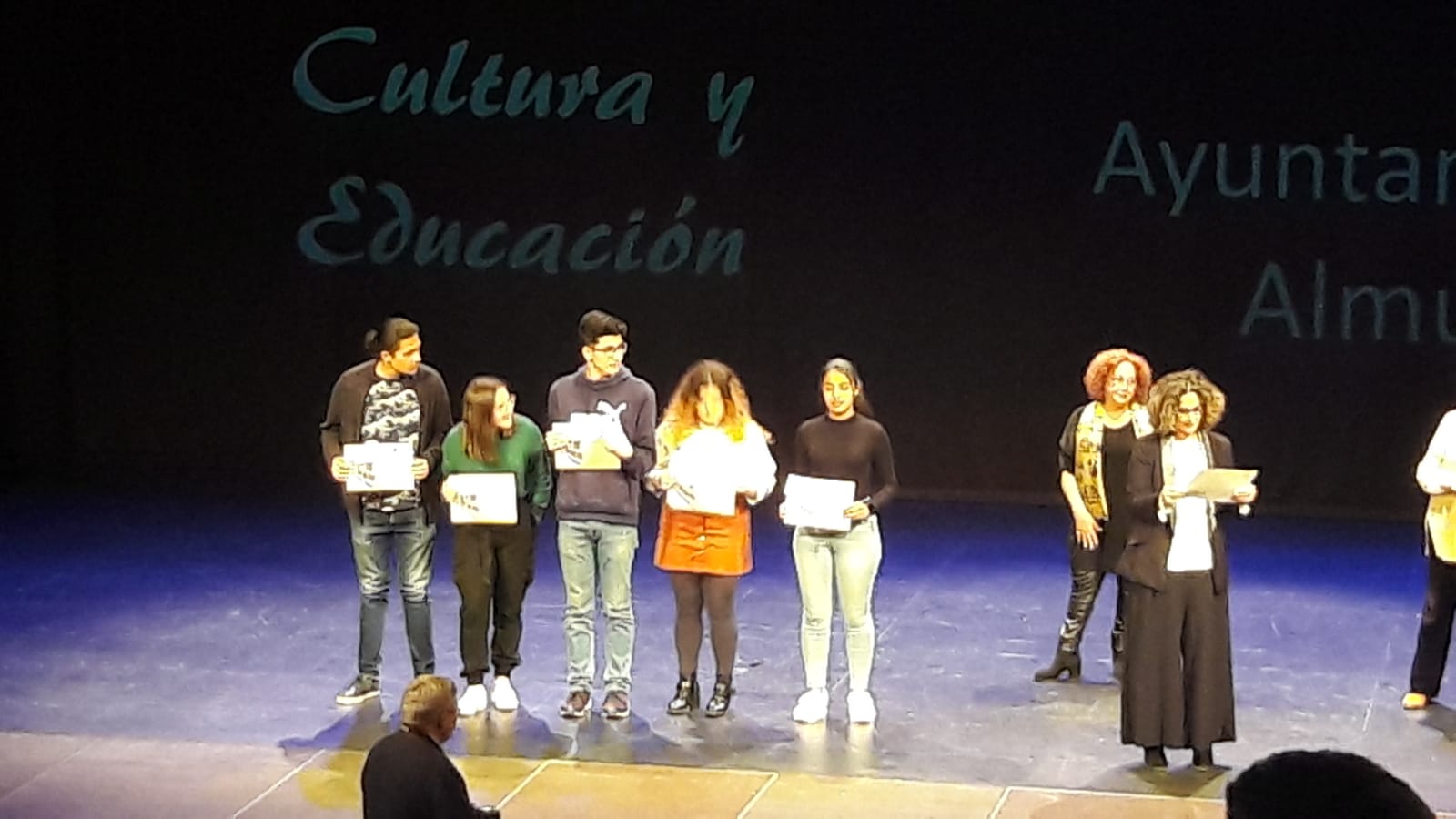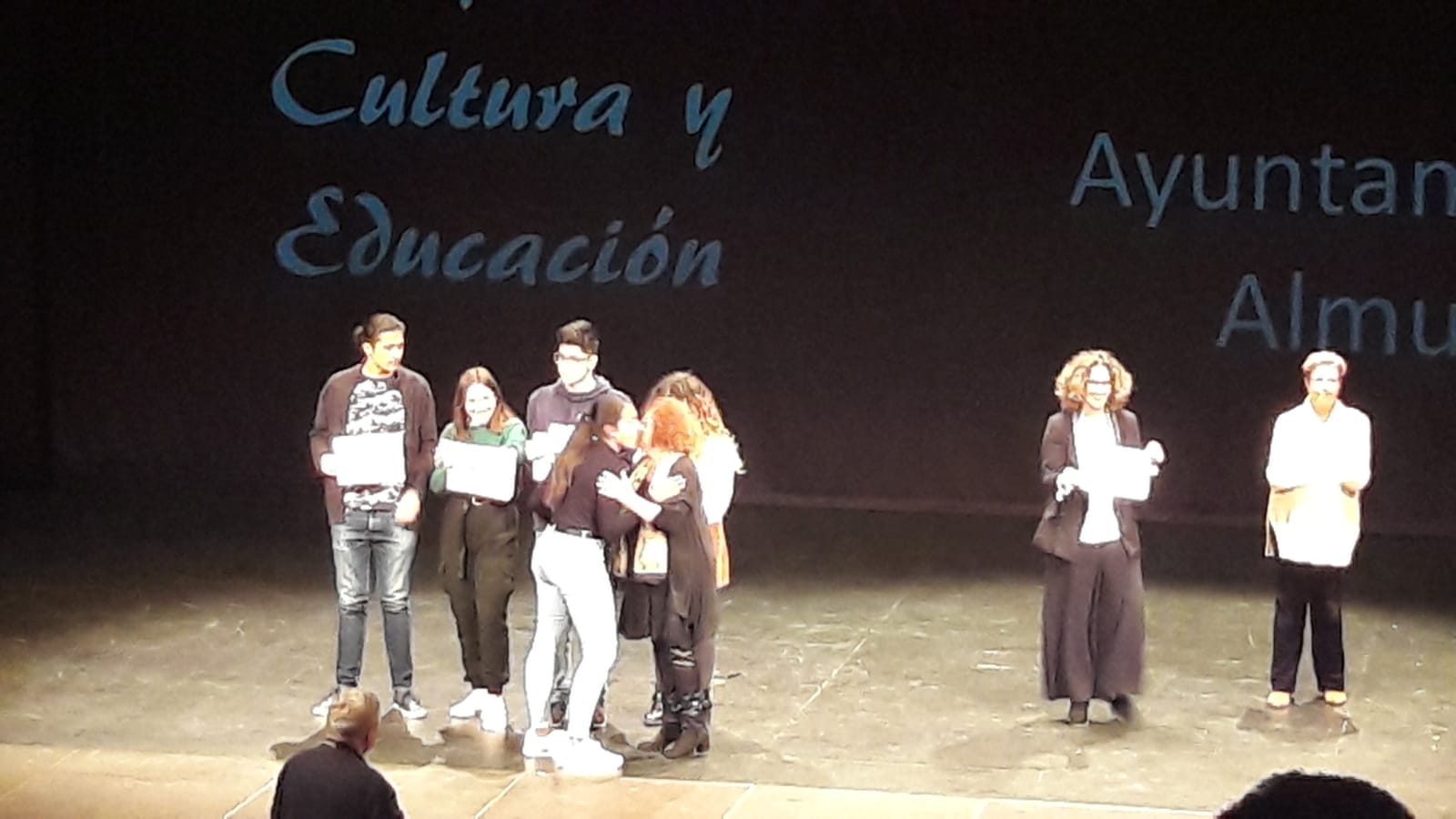- Detalles
- Visto: 4692
EL MICROSCOPIO
Trabajo realizado por:
MARIO LÓPEZ GONZÁLEZ
DEMIAN BENJAMIN STUURSMA
LA FUSIÓN NUCLEAR
Trabajo realizado por:
NILO MATA
JEAN LOUIS ROMERO
- Detalles
- Visto: 3584
|
This year, the VII Day of Languages has taken place on April 29th and 30th. We want to keep on celebrating this day because, as we always say, languages are very important at IES Al-Ándalus. And it is not only because we are a bilingual school but because we think languages mean equality and inclusion and are one of the most important ways to open doors to Europe and the rest of the world. Empowering students‘ personal autonomy is one of our main goals and this can be achieved by teaching them different languages and bringing native speakers to our school for them to be able to listen to different accents and get to know different cultures. This way, they break barriers and limits and learn to manage their own lives and free will. As every year, we have given our students the chance to attend different activities, workshops, presentations and talks by the kind volunteers who make themselves available to tell us about their own countries, experiences and points of view. This year, we are proud to say that the VII Day of Languages has been possible thanks to the valuable help of 16 English speaking volunteers from different countries and continents, one French speaker from France, 1 Sign Language expert, 3 painters from Italy, France and Spain, 1 Tai Chi master together with some of the students and teachers from our school. The activities, workshops and talks which have taken place at our school are the following:
-James Cook All these activities have covered 65 periods in different groups and levels along these 2 days. We want to thank all the volunteers who have been so kind as to make all these activities possible and without whom the activities wouldn’t have ocurred. And we want to say thank you to all the teachers and students who have helped one way or another and the ones who have taken part in any of the activities. Thank you Alyssa, Anna, Dita, Julie, Linda, David, Jackie, Janet, Jenny, Kathy, Laura, Ann, Rolf, George, Melissa, Karin, Janet, Ian, Helen, Valentina, Sylvie, Martín Morales, Mike. THANK YOU ALL |
Este año, los días 29 y 30 de Abril ha tenido lugar el VII Día de las Lenguas. Nosotros hemos querido continuar celebrando este día porque, como siempre decimos, las lenguas son muy importantes en el IES Al-Ándalus. Y no solo porque seamos un instituto bilingüe sino porque pensamos que las lenguas significan igualdad e inclusión y son unas de las más importantes formas de abrir puertas a Europa y el resto de el mundo. Potenciar la autonomía personal de los estudiantes es uno de nuestros principales objetivos y esto puede ser logrado enseñándoles a ser capaces de escuchar diferentes acentos y conocer diferentes culturas. De esta manera ellos rompen barreras y límites y aprenden a gestionar sus propias vidas y libre voluntad. Como cada año, hemos otorgado a nuestros alumnos la oportunidad de asistir a diferentes actividades,talleres,presentaciones y charlas de los amables voluntarios que están disponibles para contarnos sobre sus propios países, experiencias y puntos de vista. Este año nosotros estamos orgullosos de decir que las VII Día de las Lenguas ha sido posible gracias a la inestimable ayuda de 16 voluntarios angloparlantes de diferentes países y continentes, un francoparlante de Francia, un experto en lengua de signos, 3 pintores de Italia, Francia y España, un maestro de Tai Chi junto con algunos de nuestros alumnos y profesores de nuestro instituto. Las actividades, talleres y charlas que han tenido lugar en el centro son las siguientes:
-James Cook Todas estas actividades han cubierto 65 periodos en difentes grupos y niveles a lo largo de estos 2 días Nosotros queremos agradecer a los voluntarios que han sido tan amables de hacer posibles todas estas actividades y sin los cuales estas no hubiesen tenido lugar. Y nosotros queremos agradecer a todos los profesores y alumnos que han ayudado de una forma u otra y a los que han tomado partido en cualquiera de las actividades. Gracias a Alyssa, Anna, Dita, Julie, Linda, David, Jackie, Janet, Jenny, Kathy, Laura, Ann, Rolf, George, Melissa, Karin, Janet, Ian, Helen, Valentina, Sylvie, Martín Morales, Mike. GRACIAS A TODOS |
Francisco Martínez Torres
Día de las lenguas 2019_1
IMG-20190501-WA0031.jpg
http://iesalandalus.es/images/noticias/2018_2019/diadelaslenguas/IMG-20190501-WA0031.jpg
IMG-20190501-WA0032.jpg
http://iesalandalus.es/images/noticias/2018_2019/diadelaslenguas/IMG-20190501-WA0032.jpg
IMG-20190501-WA0034.jpg
http://iesalandalus.es/images/noticias/2018_2019/diadelaslenguas/IMG-20190501-WA0034.jpg
IMG-20190501-WA0035.jpg
http://iesalandalus.es/images/noticias/2018_2019/diadelaslenguas/IMG-20190501-WA0035.jpg
IMG-20190501-WA0036.jpg
http://iesalandalus.es/images/noticias/2018_2019/diadelaslenguas/IMG-20190501-WA0036.jpg
IMG-20190501-WA0037.jpg
http://iesalandalus.es/images/noticias/2018_2019/diadelaslenguas/IMG-20190501-WA0037.jpg
IMG-20190501-WA0038.jpg
http://iesalandalus.es/images/noticias/2018_2019/diadelaslenguas/IMG-20190501-WA0038.jpg
IMG-20190501-WA0039.jpg
http://iesalandalus.es/images/noticias/2018_2019/diadelaslenguas/IMG-20190501-WA0039.jpg
IMG-20190501-WA0040.jpg
http://iesalandalus.es/images/noticias/2018_2019/diadelaslenguas/IMG-20190501-WA0040.jpg
IMG-20190501-WA0041.jpg
http://iesalandalus.es/images/noticias/2018_2019/diadelaslenguas/IMG-20190501-WA0041.jpg
IMG-20190501-WA0042.jpg
http://iesalandalus.es/images/noticias/2018_2019/diadelaslenguas/IMG-20190501-WA0042.jpg
IMG-20190501-WA0043.jpg
http://iesalandalus.es/images/noticias/2018_2019/diadelaslenguas/IMG-20190501-WA0043.jpg
IMG-20190501-WA0044.jpg
http://iesalandalus.es/images/noticias/2018_2019/diadelaslenguas/IMG-20190501-WA0044.jpg
IMG-20190501-WA0045.jpg
http://iesalandalus.es/images/noticias/2018_2019/diadelaslenguas/IMG-20190501-WA0045.jpg
IMG-20190501-WA0046.jpg
http://iesalandalus.es/images/noticias/2018_2019/diadelaslenguas/IMG-20190501-WA0046.jpg
IMG-20190501-WA0047.jpg
http://iesalandalus.es/images/noticias/2018_2019/diadelaslenguas/IMG-20190501-WA0047.jpg
IMG-20190501-WA0048.jpg
http://iesalandalus.es/images/noticias/2018_2019/diadelaslenguas/IMG-20190501-WA0048.jpg
IMG-20190501-WA0049.jpg
http://iesalandalus.es/images/noticias/2018_2019/diadelaslenguas/IMG-20190501-WA0049.jpg
IMG-20190501-WA0050.jpg
http://iesalandalus.es/images/noticias/2018_2019/diadelaslenguas/IMG-20190501-WA0050.jpg
Día de las lenguas 2019_2
IMG-20190501-WA0051.jpg
http://iesalandalus.es/images/noticias/2018_2019/diadelaslenguas/IMG-20190501-WA0051.jpg
IMG-20190501-WA0052.jpg
http://iesalandalus.es/images/noticias/2018_2019/diadelaslenguas/IMG-20190501-WA0052.jpg
IMG-20190501-WA0053.jpg
http://iesalandalus.es/images/noticias/2018_2019/diadelaslenguas/IMG-20190501-WA0053.jpg
IMG-20190501-WA0054.jpg
http://iesalandalus.es/images/noticias/2018_2019/diadelaslenguas/IMG-20190501-WA0054.jpg
IMG-20190501-WA0056.jpg
http://iesalandalus.es/images/noticias/2018_2019/diadelaslenguas/IMG-20190501-WA0056.jpg
IMG-20190501-WA0057.jpg
http://iesalandalus.es/images/noticias/2018_2019/diadelaslenguas/IMG-20190501-WA0057.jpg
IMG-20190501-WA0058.jpg
http://iesalandalus.es/images/noticias/2018_2019/diadelaslenguas/IMG-20190501-WA0058.jpg
IMG-20190501-WA0059.jpg
http://iesalandalus.es/images/noticias/2018_2019/diadelaslenguas/IMG-20190501-WA0059.jpg
IMG-20190501-WA0060.jpg
http://iesalandalus.es/images/noticias/2018_2019/diadelaslenguas/IMG-20190501-WA0060.jpg
IMG-20190501-WA0062.jpg
http://iesalandalus.es/images/noticias/2018_2019/diadelaslenguas/IMG-20190501-WA0062.jpg
IMG-20190501-WA0063.jpg
http://iesalandalus.es/images/noticias/2018_2019/diadelaslenguas/IMG-20190501-WA0063.jpg
IMG-20190501-WA0064.jpg
http://iesalandalus.es/images/noticias/2018_2019/diadelaslenguas/IMG-20190501-WA0064.jpg
IMG-20190502-WA0000.jpg
http://iesalandalus.es/images/noticias/2018_2019/diadelaslenguas/IMG-20190502-WA0000.jpg
IMG-20190502-WA0001.jpg
http://iesalandalus.es/images/noticias/2018_2019/diadelaslenguas/IMG-20190502-WA0001.jpg
IMG-20190502-WA0002.jpg
http://iesalandalus.es/images/noticias/2018_2019/diadelaslenguas/IMG-20190502-WA0002.jpg
IMG-20190502-WA0003.jpg
http://iesalandalus.es/images/noticias/2018_2019/diadelaslenguas/IMG-20190502-WA0003.jpg
IMG-20190502-WA0004.jpg
http://iesalandalus.es/images/noticias/2018_2019/diadelaslenguas/IMG-20190502-WA0004.jpg
IMG-20190502-WA0005.jpg
http://iesalandalus.es/images/noticias/2018_2019/diadelaslenguas/IMG-20190502-WA0005.jpg
IMG-20190502-WA0006.jpg
http://iesalandalus.es/images/noticias/2018_2019/diadelaslenguas/IMG-20190502-WA0006.jpg
IMG-20190502-WA0007.jpg
http://iesalandalus.es/images/noticias/2018_2019/diadelaslenguas/IMG-20190502-WA0007.jpg
IMG-20190502-WA0008.jpg
http://iesalandalus.es/images/noticias/2018_2019/diadelaslenguas/IMG-20190502-WA0008.jpg
- Detalles
- Visto: 4040
|
‘As I Walked Out One Midsummer Morning’ Laurie Lee (English author: 1918 – 1979) In 1935, when Laurie Lee was a young man, he left his home in the west of England to start an adventure, exploring Spain. He arrived in Vigo and during the year he walked south, experiencing the various cultures of the countryside and cities. He was welcomed by many groups of people on his journey and would join them working in fields and bars as he started to learn Spanish. He was also a musician and would play his violin to entertain and to receive some pesetas for his musical talent. Eventually he arrived at the coastal town of Cádiz and then decided to continue his adventure along the south coast to finish in Barcelona. Laurie Lee arrived in Almuñécar during December 1935, just after the Spanish elections had taken place. The last two chapters of his novel give a vivid description of Almuñécar and its inhabitants, during the months leading up to the Civil War. He enjoyed living and working in Almuñécar and so he decided to stay for a while, but in July 1936, the Civil War broke out and his Spanish adventure came to a sudden end. As the Civil War came to Almuñécar, the town was hit by shells from a destroyer and soon the inhabitants were embroiled in conflict and terror, which meant that Laurie Lee had to escape and return to England.¬¬¬¬ For the majority of the students, these two final chapters were a history of their town, where possibly generations of their family came from, especially their great grandparents, who could have been living here in 1935/36. So together, we walked through ‘old Almuñécar’ following in the footsteps of Laurie Lee. To understand our route through the old town, we looked at a presentation showing Almuñécar in 1935/6. There were fields of sugarcane surrounding Almuñécar and the sugarcane factory near San Cristobal and small fishing boats on Puerta del Mar, where the fishermen hauled in their nets and shared the few pesetas between them. Below the castle, small white houses crowded the narrow, steep streets. We saw photographs of buildings that no longer exist, like the casino and on the beach, where Los Bajos is today, was the Hotel Mediterraneo, where Laurie Lee worked and entertained the local people playing his violin. Laurie Lee would have come along the coast from Malaga and down the dirt track (Avenida del Sol) which was lined with the same trees that we see today. The bachillerato students left the modern Al Andalus and walked past the Roman aqueduct, which supplied drinking water to the town in 1935. This monument was a reminder of traders and invaders that help build the town over 2000 years. We walked past the magnificent bronze statue of the campesino alongside some sugar cane then through Puerta Granada and walked up into Sexitano, a name given to the town by the Phoenician traders. On our journey students read extracts in English and Spanish from Laurie Lee’s novel. Two students, Rafael Martin and Mateusz Sitniewski played their violins, reminding us of Laurie Lee’s journey through Spain. We ended our historical walk through the ‘old town’ and sat alongside Laurie Lee’s memorial on Paseo de Altillo. Like him, in 1936, we ate ‘queso y pan’ together. Laurie Lee returned briefly to Spain in 1937, to join the International Brigade, but was captured and managed to escape across the Pyrenees mountains. He wrote his novel 33 years later in 1969, during Franco’s regime and to protect the identity of the people of Almuñécar he decided to call it ‘El Castillo’. His writing is remembered by our students at this memorial. |
|
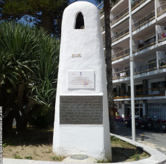
Laurie Lee
IMG-8058.jpg
http://iesalandalus.es/images/noticias/2018_2019/laurie/IMG-8058.jpg
IMG-8059.JPG
http://iesalandalus.es/images/noticias/2018_2019/laurie/IMG-8059.JPG
IMG-8063.JPG
http://iesalandalus.es/images/noticias/2018_2019/laurie/IMG-8063.JPG
IMG-8064.JPG
http://iesalandalus.es/images/noticias/2018_2019/laurie/IMG-8064.JPG
IMG-8066.JPG
http://iesalandalus.es/images/noticias/2018_2019/laurie/IMG-8066.JPG
IMG-8067.JPG
http://iesalandalus.es/images/noticias/2018_2019/laurie/IMG-8067.JPG
IMG-8055.JPG
http://iesalandalus.es/images/noticias/2018_2019/laurie/IMG-8055.JPG
- Detalles
- Visto: 4476
Secundaria ha participado en el programa ALDEA desde el área de inglés haciendo un estudio del reciclaje en la localidad y como tarea final cada alumno ha creado un mapa con los puntos o contenedores de reciclaje que hay desde su casa al instituto para fomentar el reciclaje, el reuso y la reducción de plásticos, papel y vidrio en la localidad y concienciar al alumnado y familias.
Tras la recogida de los mapas, el pasillo de la planta baja delIES que durará todo el curso escolar. Especial mención merece nuestro magnífico colaborador británico Michael y su mujer Jenny que tanta ayuda nos han brindado al Departamento de Inglés y llevaron a cabo la organización de la exposición. Thanks a lot!Let´s reduce, recycle and reuse!
Programa ALDEA
IMG-20190430-WA0022.jpg
http://iesalandalus.es/images/noticias/2018_2019/aldea/IMG-20190430-WA0022.jpg
IMG-20190430-WA0023.jpg
http://iesalandalus.es/images/noticias/2018_2019/aldea/IMG-20190430-WA0023.jpg
IMG-20190430-WA0021.jpg
http://iesalandalus.es/images/noticias/2018_2019/aldea/IMG-20190430-WA0021.jpg
- Detalles
- Visto: 4878
Una veintena de premios se llevaron los alumnos del Colegio Público La Santa Cruz de Almuñécar en el XXXV Certamen Literario Escolar que celebró una edición más la Concejalía de Cultura y Educación del Ayuntamiento de Almuñécar, a través de la Biblioteca Municipal, con motivo del Día del Libro. Es el evento destacado con el que Almuñécar se sumó a tan señalada jornada donde el libro es el protagonista a través de los trabajos que llevan a cabo los alumnos de los distintos centros educativos de Almuñécar y La Herradura, tanto de Primaria, como en Secundaria y Educación Permanente, en distintos niveles y modalidades como la poesía, prosa, ilustraciones y cómic. El galardón para los premiados consiste en diploma y cheque regalo para adquisición de libros en las librerías locales sexitanas. También los centros educativos participantes recibieron su diploma.
El acto, que estuvo presidido por la concejal del Área, Olga Ruano, y coordinado por el Javier Sánchez, director de la Biblioteca Municipal, reunió en el auditorio de la Casa de la Cultura a numerosas personas de todas las edades que acompañaron a los galardonados en los distintos y modalidades que se había realizado el citado Certamen cuyo jurado estuvo presidido por Jesús Contreras Rodríguez y contó, como vocales, con profesores de los distintos centros educativos de Primaria y Secundaria del municipio sexitano, a excepción del IES de La Herradura. Por el contrario, en esta edición se sumaba por primera vez el centro de lengua inglesa, International School de Almuñécar, que por cierto, se hizo con ocho premios y especialmente en el apartado de Secundaria, donde los alumnos del IES Al Andalus fueron los más destacados con casi una docena de premios.
Antes de la entrega de premios los asistentes pudieron ver un vídeo documental sobre una treintena de impresionantes bibliotecas del todo el mundo, elaborado desde la Biblioteca Municipal “Jesús Serrano Garijo” de Almuñécar así como dos bellos cuentos presentados por Margarita Saldivia y Sonia Llamas. Por otra parte, la lectura en voz alta que se anunció para las plazas de Los Higuitos, por la mañana, “tuvo que ser suspendida por la lluvia y, por la tarde, tras lo desapacible del tiempo, en la plaza de la Constitución tampoco tuvo la participación esperada”, según informó el director de la Biblioteca de Almuñécar.
Fuente: Diariosexitano.com
Otras fuentes que se hacen también eco de la noticia: Infocostatropical.com
Certamen Literario
IMG-20190424-WA0020.jpg
http://iesalandalus.es/images/noticias/2018_2019/certamenliterario/IMG-20190424-WA0020.jpg
IMG-20190424-WA0021.jpg
http://iesalandalus.es/images/noticias/2018_2019/certamenliterario/IMG-20190424-WA0021.jpg
IMG-20190424-WA0022.jpg
http://iesalandalus.es/images/noticias/2018_2019/certamenliterario/IMG-20190424-WA0022.jpg
IMG-20190424-WA0023.jpg
http://iesalandalus.es/images/noticias/2018_2019/certamenliterario/IMG-20190424-WA0023.jpg
IMG-20190424-WA0024.jpg
http://iesalandalus.es/images/noticias/2018_2019/certamenliterario/IMG-20190424-WA0024.jpg
IMG-20190424-WA0025.jpg
http://iesalandalus.es/images/noticias/2018_2019/certamenliterario/IMG-20190424-WA0025.jpg
IMG-20190424-WA0026.jpg
http://iesalandalus.es/images/noticias/2018_2019/certamenliterario/IMG-20190424-WA0026.jpg
IMG-20190424-WA0027.jpg
http://iesalandalus.es/images/noticias/2018_2019/certamenliterario/IMG-20190424-WA0027.jpg
IMG-20190424-WA0028.jpg
http://iesalandalus.es/images/noticias/2018_2019/certamenliterario/IMG-20190424-WA0028.jpg
IMG-20190424-WA0029.jpg
http://iesalandalus.es/images/noticias/2018_2019/certamenliterario/IMG-20190424-WA0029.jpg
IMG-20190424-WA0019.jpg
http://iesalandalus.es/images/noticias/2018_2019/certamenliterario/IMG-20190424-WA0019.jpg
